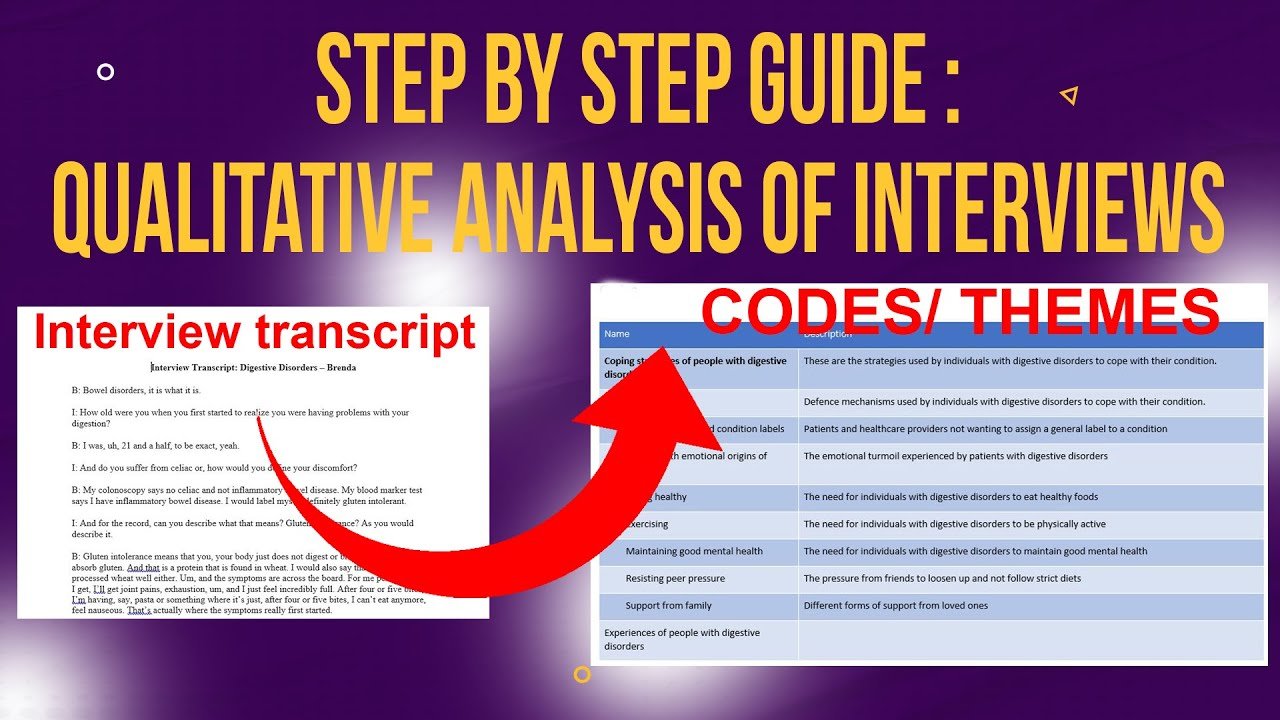Struggling to organize and analyze your qualitative data?
N-Vivo might be the solution you are looking for.
My name is Bernard Mugo. I like to refer to myself simply as an academic.

In the past three years, I’ve helped more than 200 PhD students analyze qualitative data and finally complete theirs or dissertations.
In the course of helping such a large number of students, I’ve gained invaluable experience in the best practices you can use to perform qualitative analysis of your interviews and be able to retrieve quality findings.
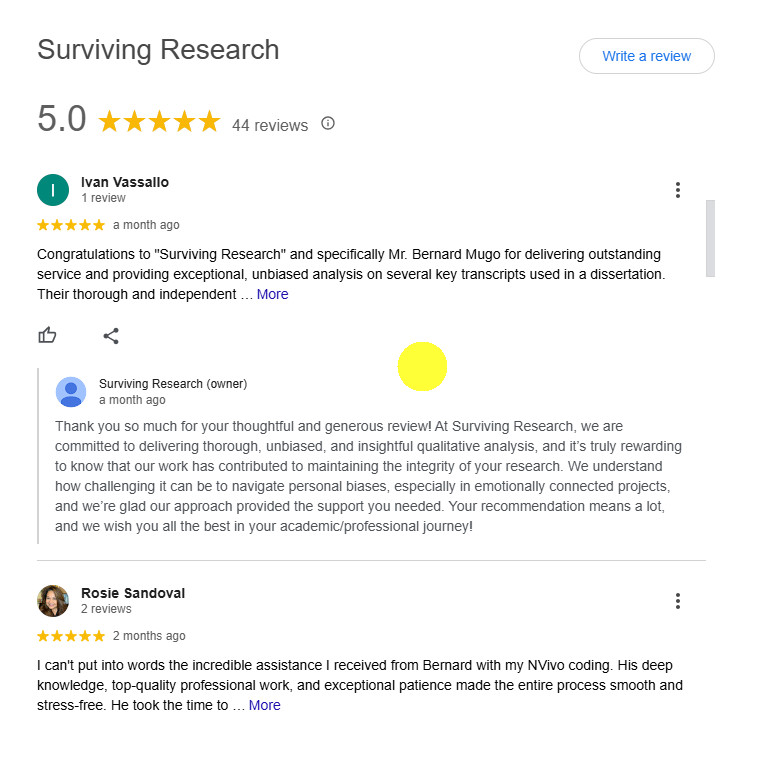
What is N-Vivo?
N-Vivo is a qualitative data analysis software made by a company called QSR International.
In the past two and a half decades, using software to manage qualitative data analysis has become popular.
This is an advancement from traditional manual methods of trying to make sense of qualitative data.
Where researchers used sticky notes to code qualitative data and come up with themes.
This was quite tedious and most of the times was also overwhelming for the researchers.
N-Vivo makes the process of qualitative data analysis easier by helping in:
- Data organization.
- Management of codes
- Visualization of findings after conducting qualitative data analysis.
In this article I’ll guide you through the basics of N-Vivo to get you started on analyzing your data like a pro.
How to get N-Vivo

Let’s begin with first where do we download N-Vivo?
We download N-Vivo in a website called lumivero.com.
So let’s go to Lumivero.com then click on the website.

You can see this is the website and let’s click on the main badge so that we can see the products and services they have.

And let’s look at products and services.
So these are the products and services they have.

Of course, let’s click on N-Vivo.

This is N-Vivo 15 which is the latest.
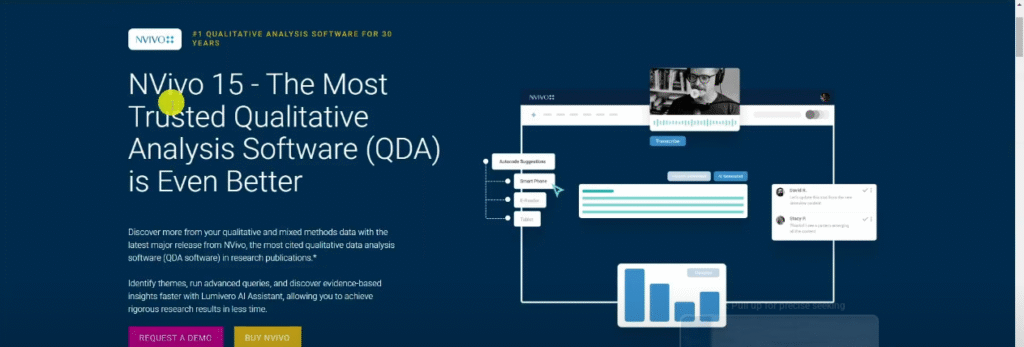
Also it’s the best software for qualitative data analysis.
So you can go to buy now and you can select this option.
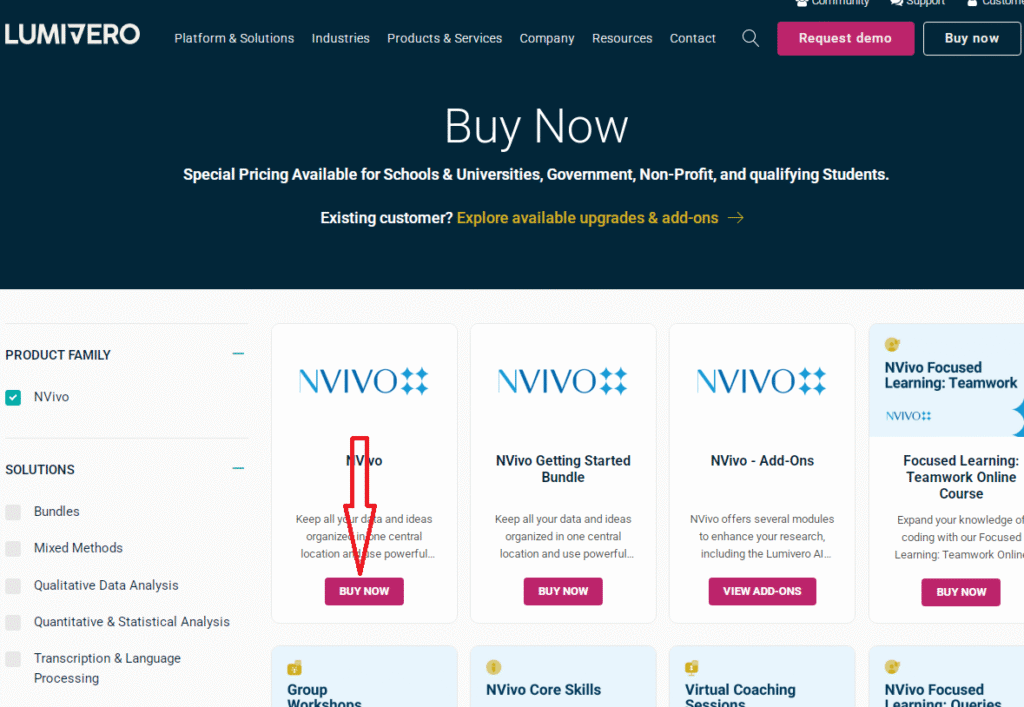
So this is N-Vivo.
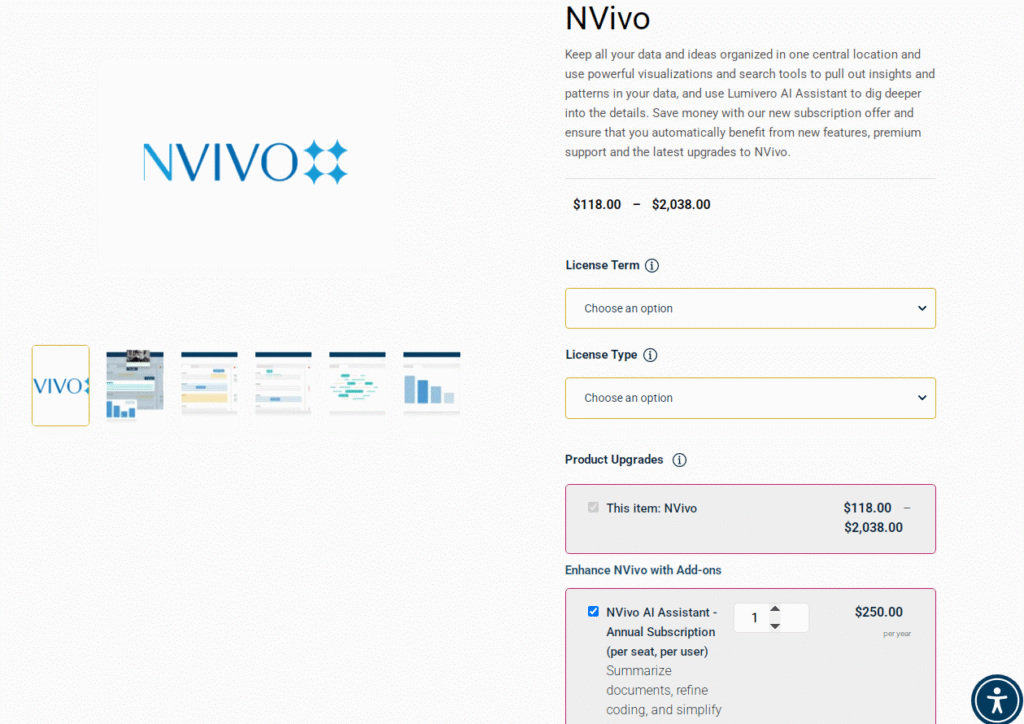
If you are a student, the best option is to come here in the license type.
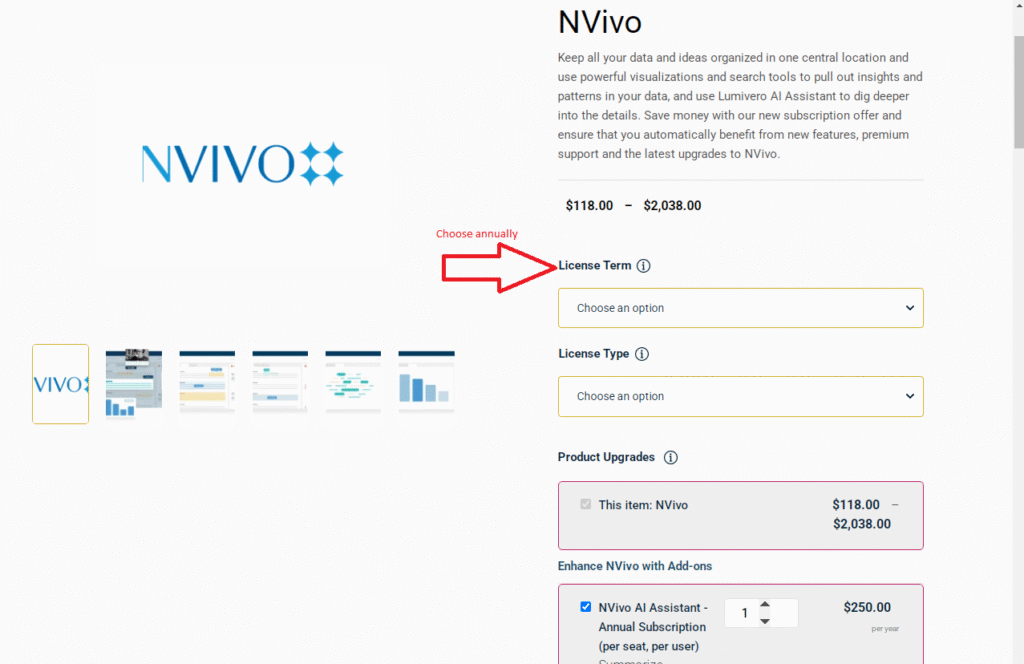
Choose an option.
Then go to student license.
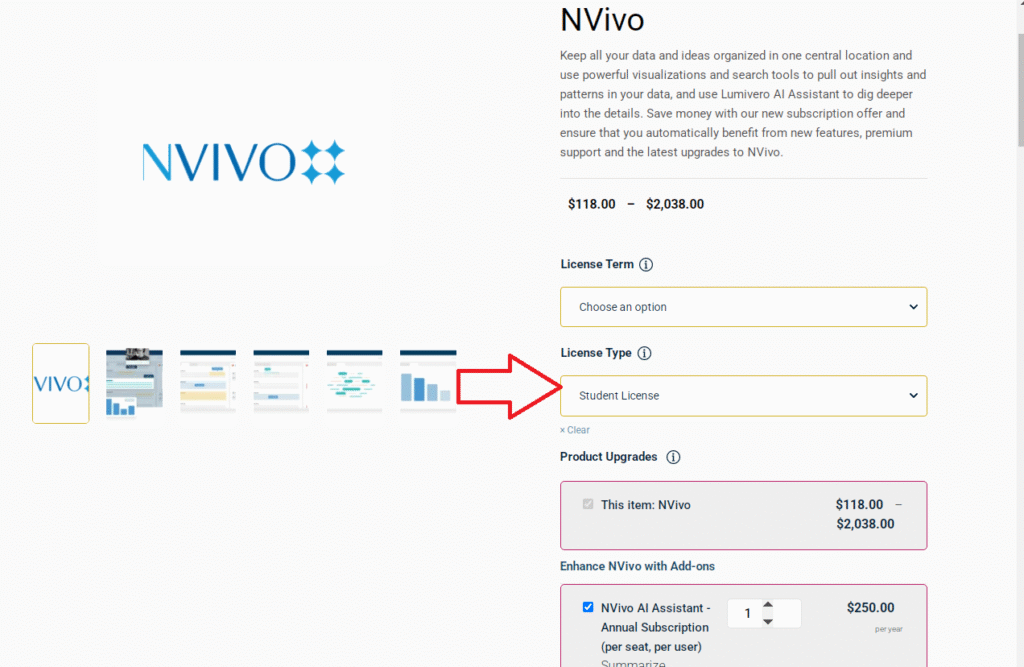
Then remove this add on.
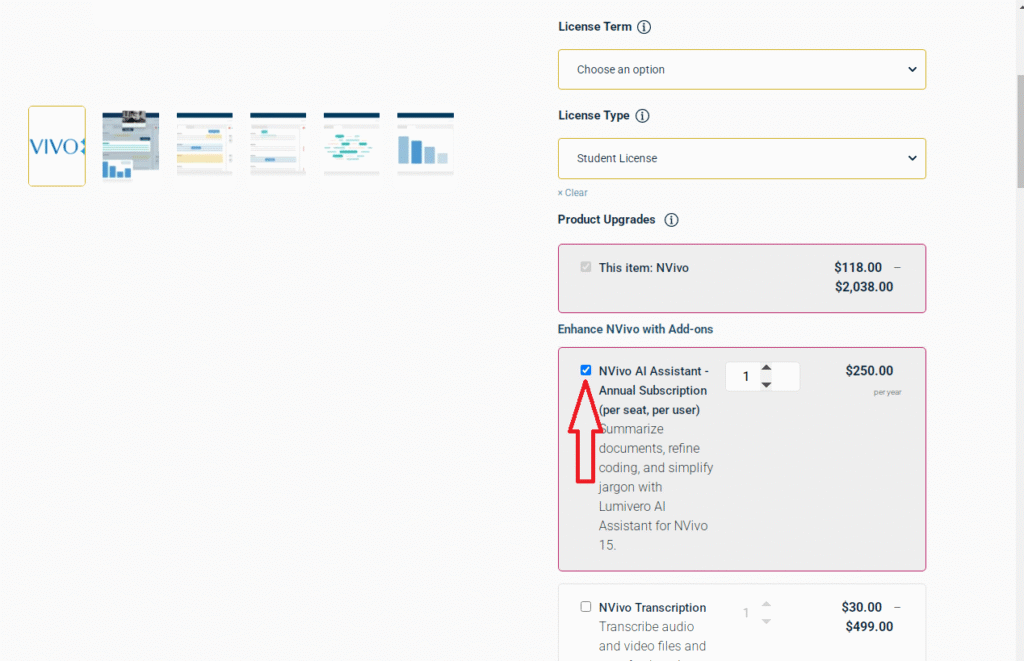
And as a student the price goes down, let’s choose annual subscription.
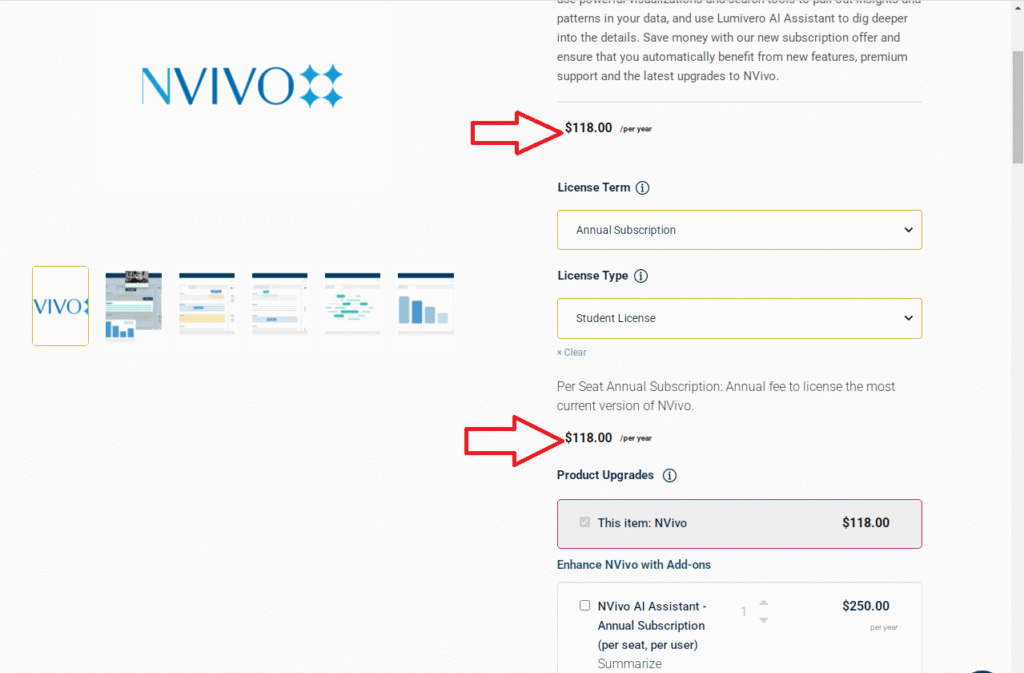
You can see it’s only 118 a year for the student license with no N-Vivo AI assistant add on.
Because trust you me, that AI assistant is not that important.
So that’s how you get N-Vivo.
Now having known where we can or how we download N-Vivo.
Let me go and open my N-Vivo.
Introduction to the main functionalities in N-Vivo
Let me just introduce to you the main functionalities that you can master as a beginner.
Or the different panels that are in N-Vivo that we can use for qualitative data analysis.
Now, when you open-Vivo this is what you’ll see.
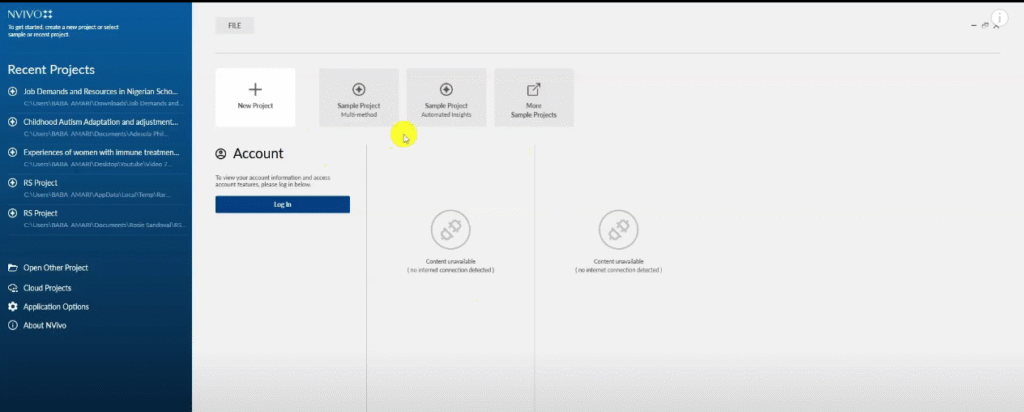
N-Vivo has three main menus.
Here is the blue menu on the left.
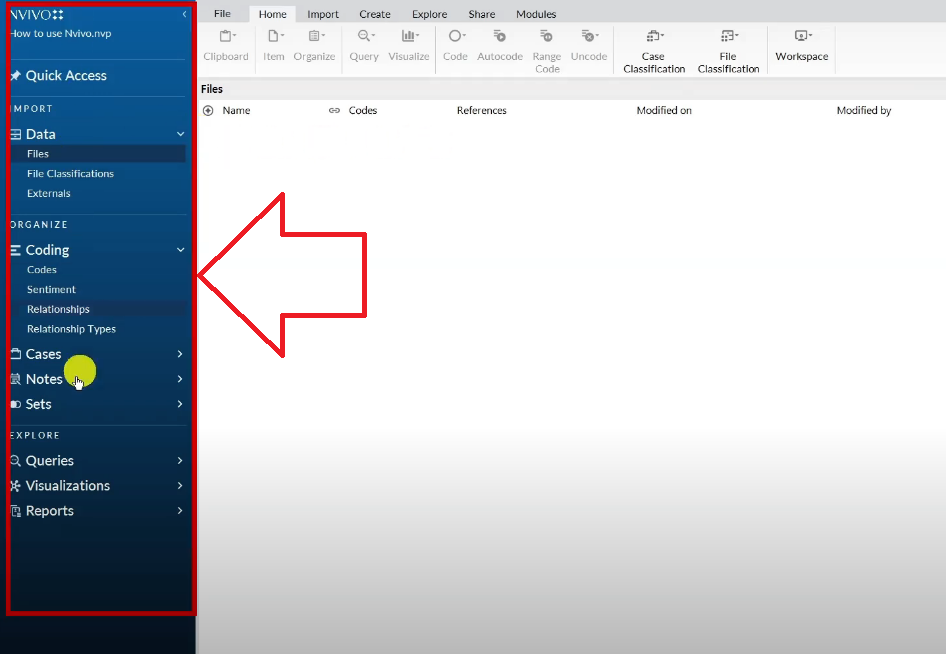
There’s another top menu.
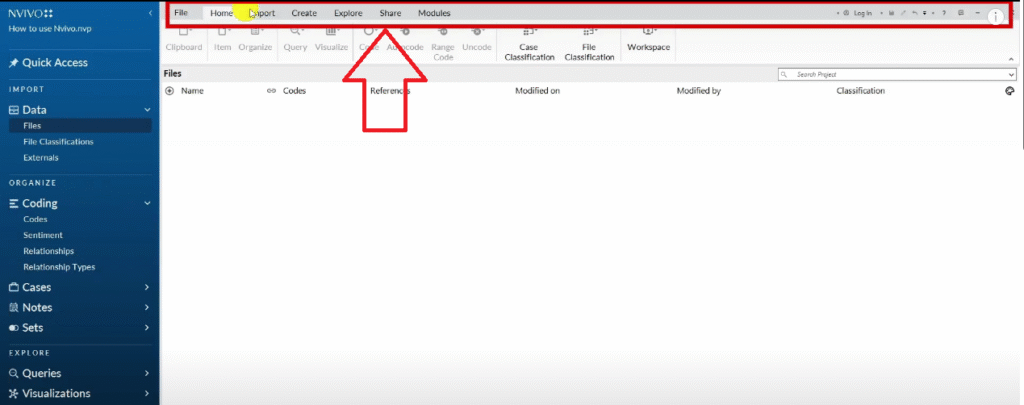
And there’s this menu below the main top menu.
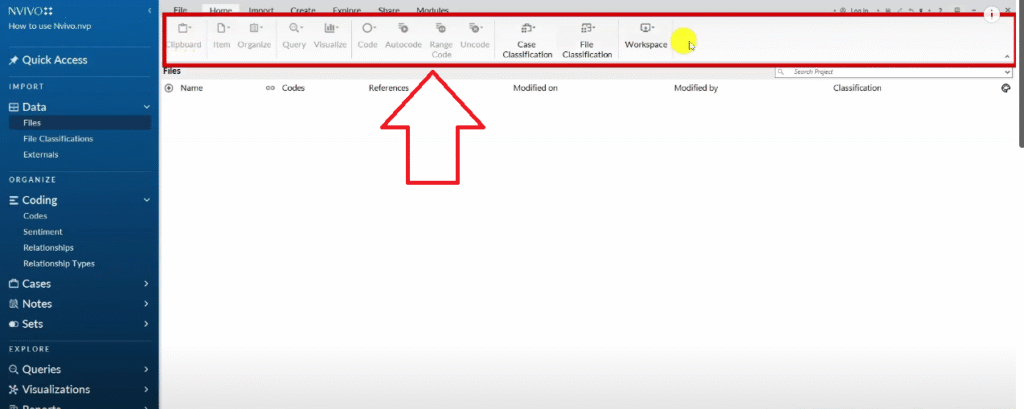
Now, as a beginner the main things that we are going to use are in the blue menu.
We are going to use the files and the codes.
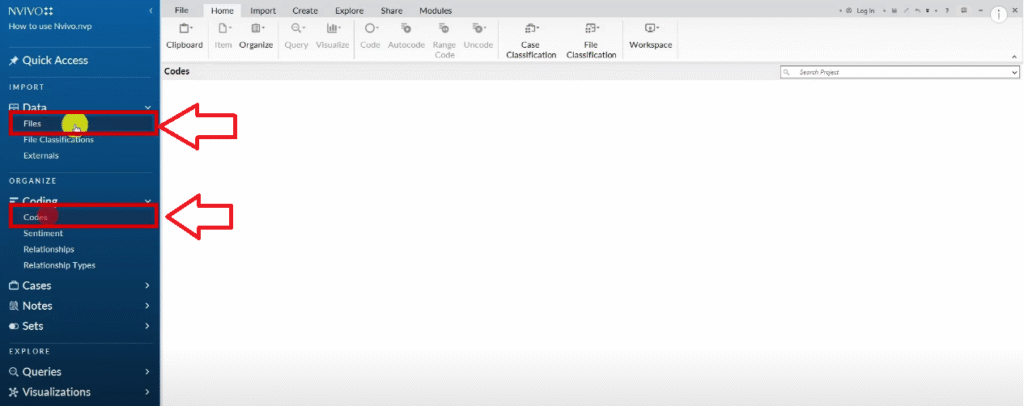
Don’t worry about all the other things.
You are going to know how to use them later.
Probably most of them you will even never use them in your analysis.
So files and codes are the two main areas that I’m going to focus on.
Later you may use visualize.
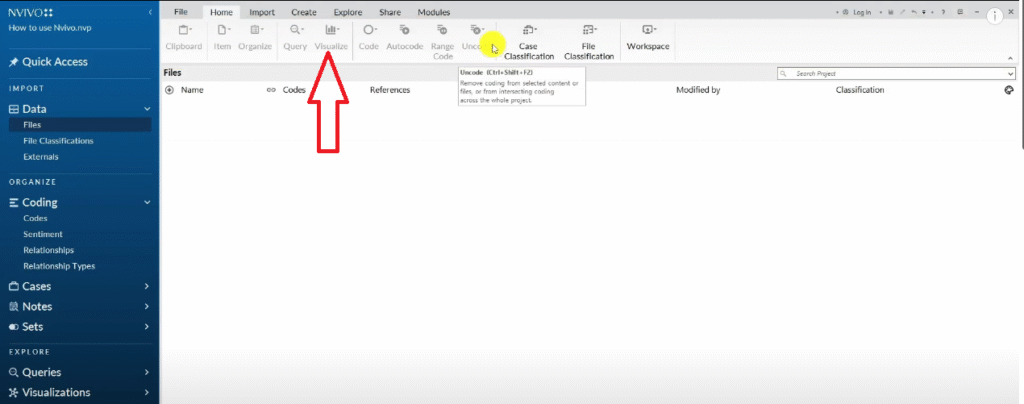
But right now let’s focus on files and codes.
So in the file section is where we are going to import our files.
How to import files
If we have files that are uniform or we have transcripts from the same group of participants.
We can import them directly in the main files folder.
So two ways to import.
One is to drag and drop.
The other is to use the import button.
So using the import button,
I can go to files.
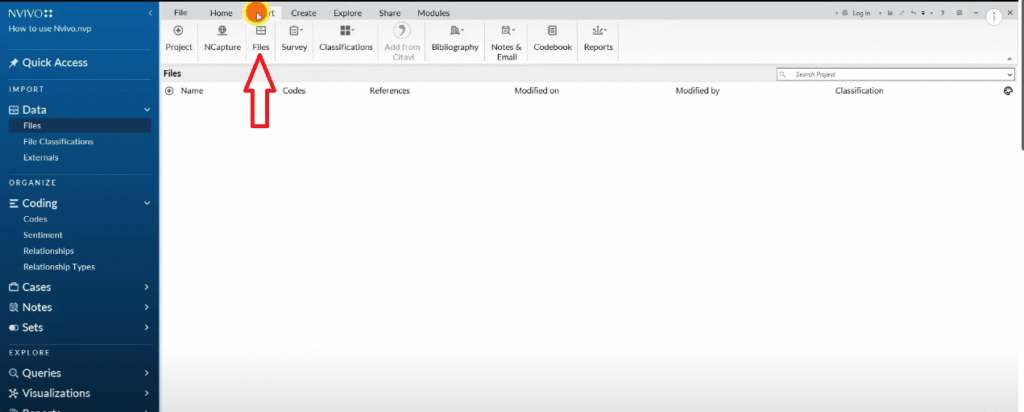
Import
Then I can check my files here where I’ve saved my transcript.
And I can click on the files I want to import.
This can be these two.
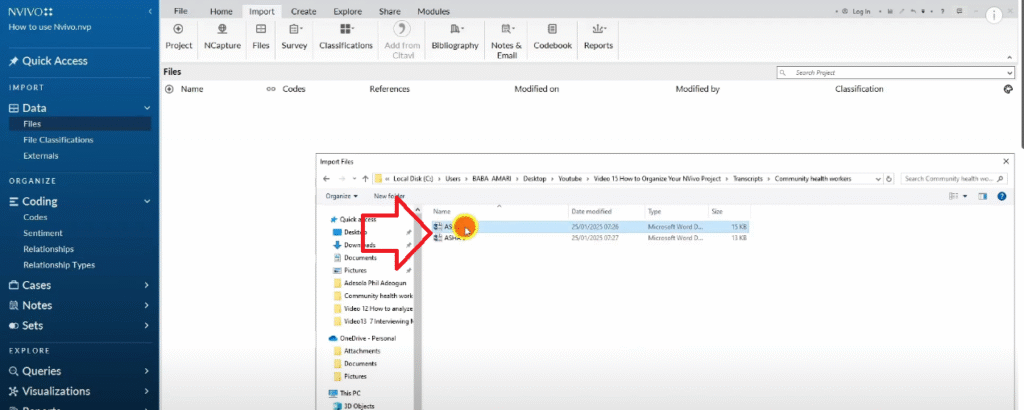
Click on both and then click ok.
Click import.
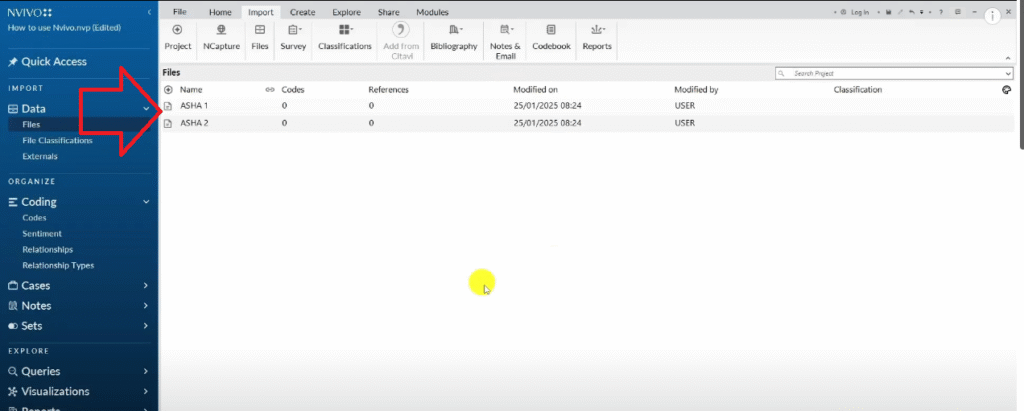
If you want to create a case that’s ok.
But right now we are not focusing on that.
So that’s how we import files into N-Vivo.
Another way can be going and locating the files in your desktop or in your computer.
Then you can alternatively drag and drop them.
Now having imported files into N-Vivo.
We naturally move to the next step which is coding and doing thematic analysis.
Definition of thematic analysis
Let me begin by first defining thematic analysis.
Thematic analysis is a qualitative research method that identifies patterns in data by organizing it into themes.
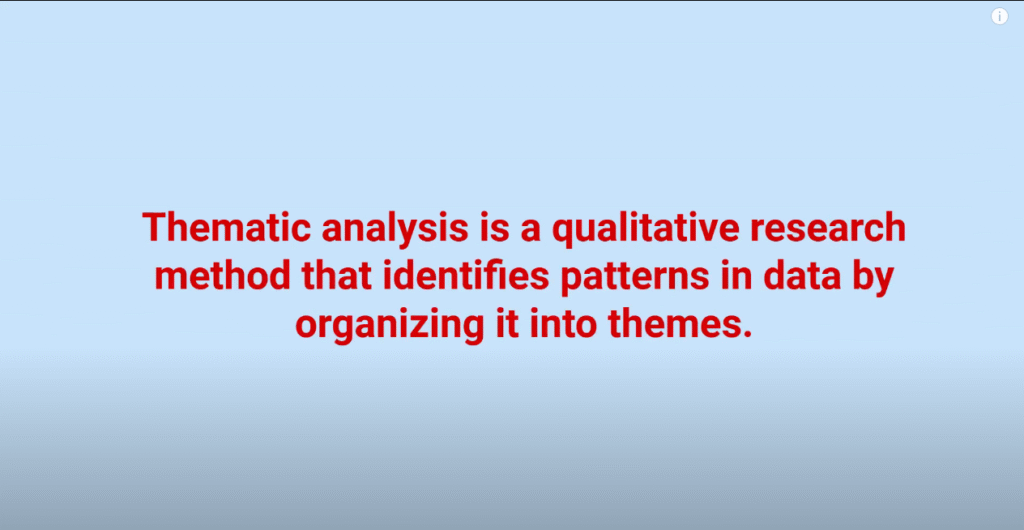
There are two main ways of doing thematic analysis.
Inductive dramatic analysis and deductive dramatic analysis.
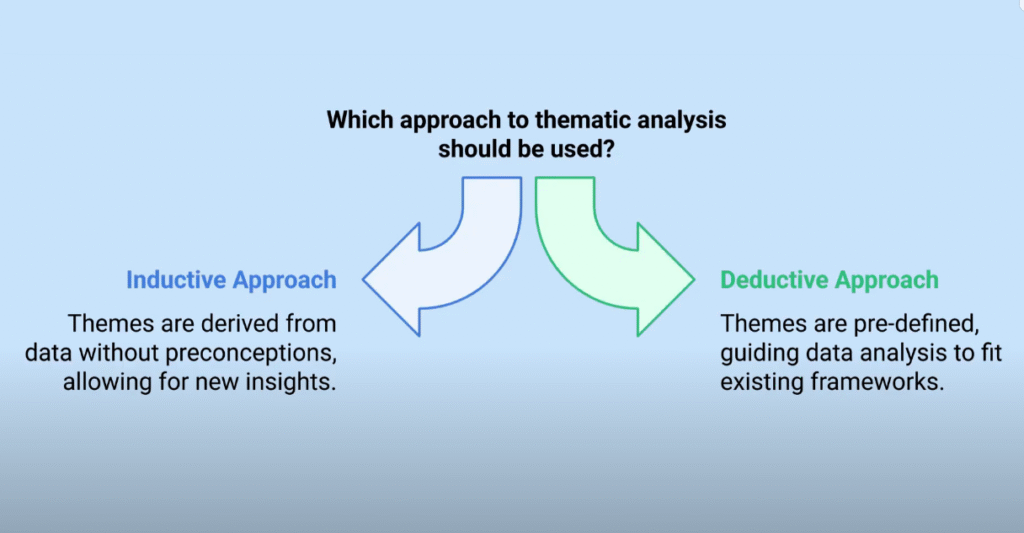
Difference between inductive thematic analysis and deductive thematic analysis
Inductive thematic analysis means that we go to the data with an open mind.
Then we get codes.
Then we look for a pattern of shared meaning between the codes to form themes.
So the data will inform the codes.
Then the codes will inform the formation of themes.
This is different from the second approach to thematic analysis which is deductive thematic analysis.
Deductive thematic analysis involves coming up with themes before analyzing and then looking to fit codes into the themes.
In this article we are going to focus on inductive thematic analysis.
Which is one of the most popular approaches that will give you more original ideas.
So the main point of research is to get new ideas.
Unless you want to test whether a tool or a framework or test a theory that’s when we use deductive approaches.
But for the purposes of this article we are going to use an inductive approach.
And the inductive approach we are going to use is the Braun and Clarke six step framework for thematic analysis.
Braun and Clarke six step framework for thematic analysis

This is one of the most popular frameworks for doing thematic analysis.
This approach encourages us to come up with codes first.
Then look for a pattern of shared meaning between the codes to form themes.
So, let’s quickly look at the six steps of this inductive framework.
The first step is familiarizing with the data.
Familiarizing with the data
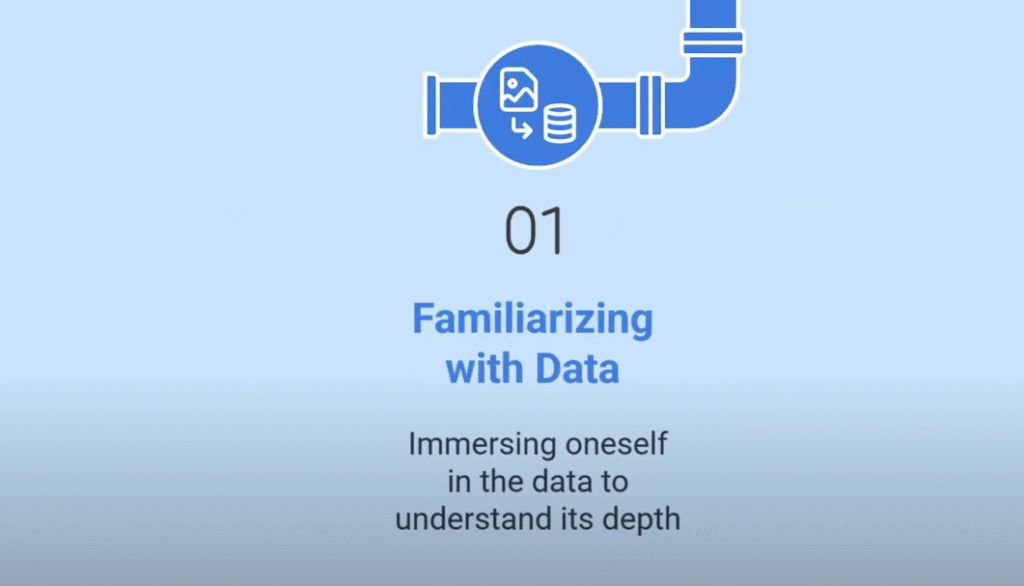
This involves going through the transcripts.
Reading them like a story and understanding them.
And then understanding what the main issues that pop out are.
That way you are going to have a deeper understanding of your data which allows you to move to the second step.
Now generating initial codes is the second step of inductive thematic analysis.
Generating initial codes
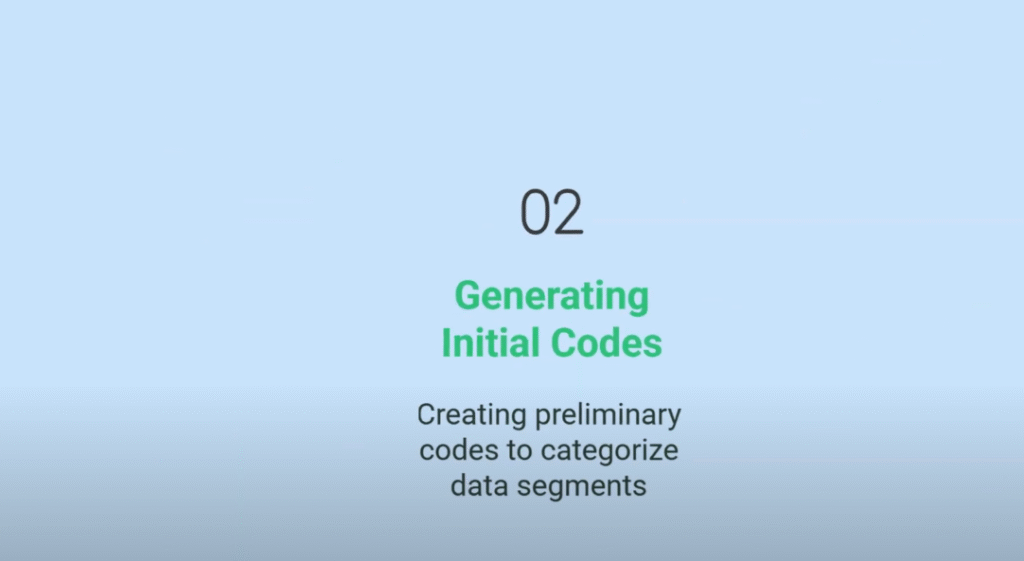
Let’s first define what a code is.
A code is a label or an interpretive statement to any particular information that’s important to a research question or objective.
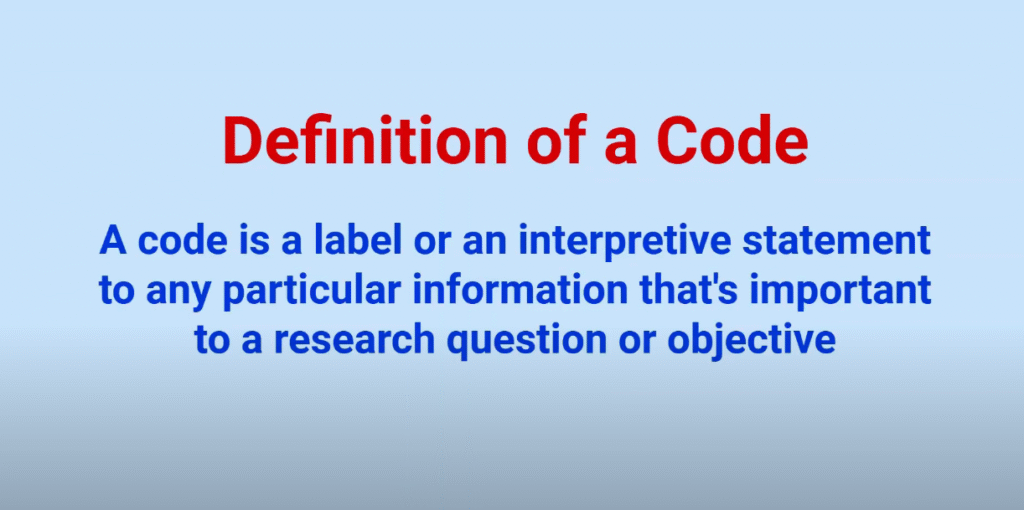
So we only label or code information that’s important to our research objectives.
And we use labels or interpretive statements when we are generating codes.
We are simply tagging, labeling, or providing interpretive statements to specific information that’s important to our research questions.
The third step in inductive thematic analysis in the Braun and Clarke six step framework is developing themes.
Developing themes.
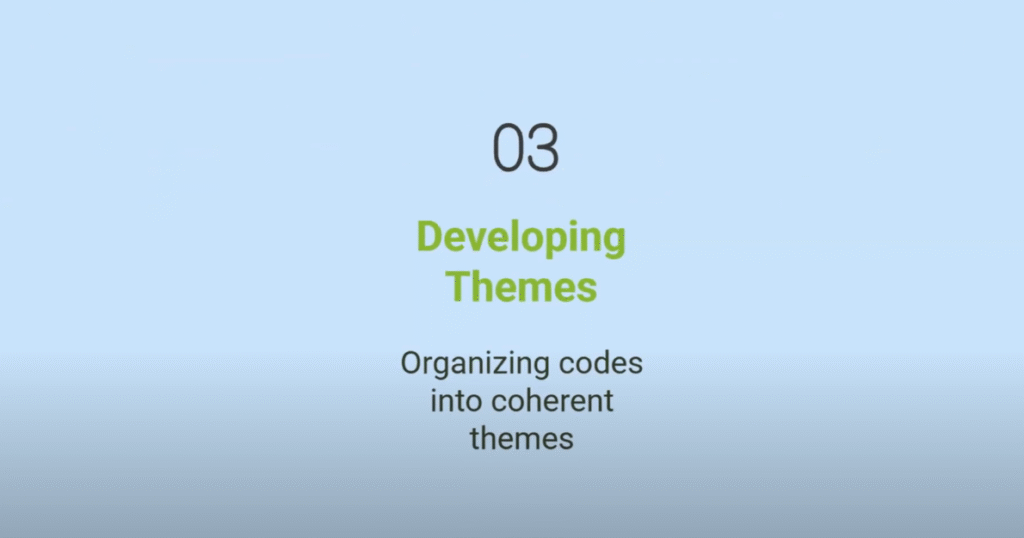
Now after we generate codes, we combine them based on shared meaning to form themes.
Then the next step will be reviewing the themes.
Reviewing themes
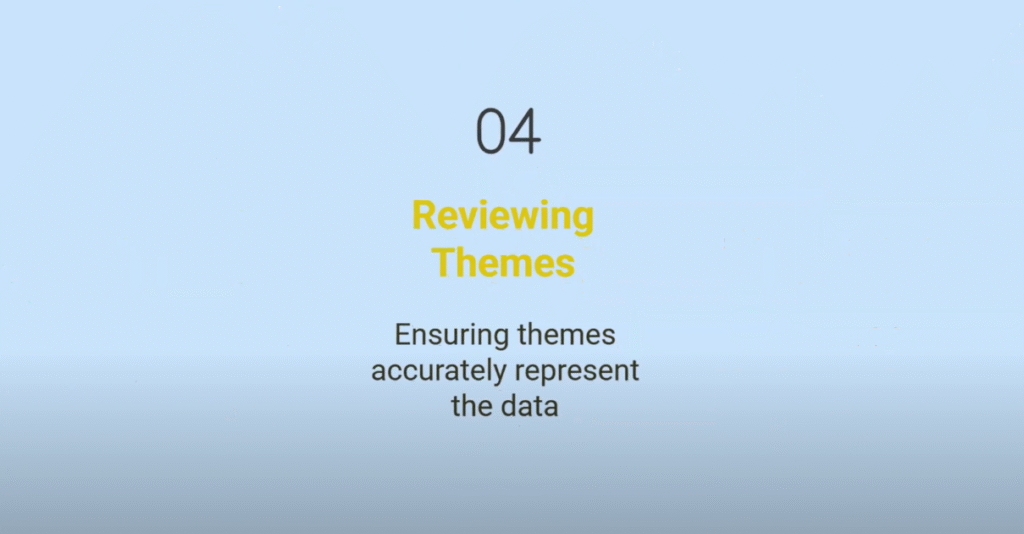
So we review the initial themes that we have and our preliminary themes.
And see which themes are the same.
Is this a theme? We generally revise and review and come up with a theme.
Finally, we define and name themes which is the fifth step.
Defining and naming themes
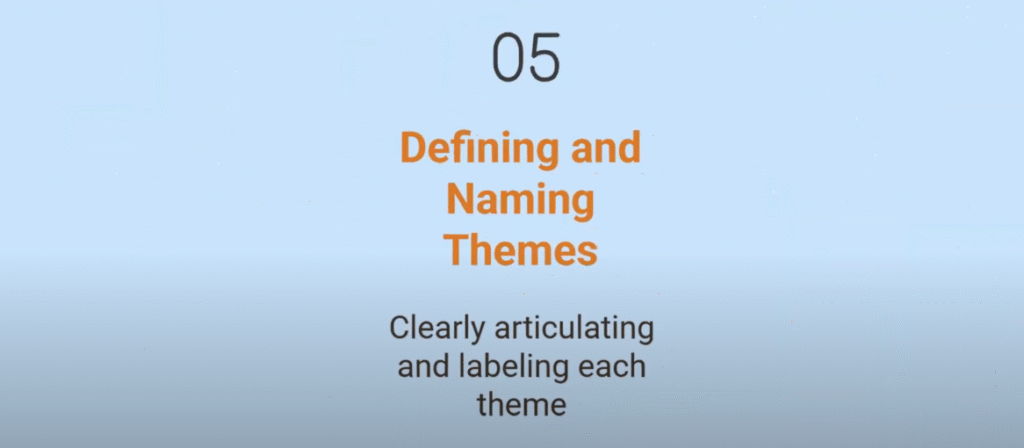
We have to tell someone else this theme means this and this.
This theme represents this and that.
And then we produce the report.
Writing the report
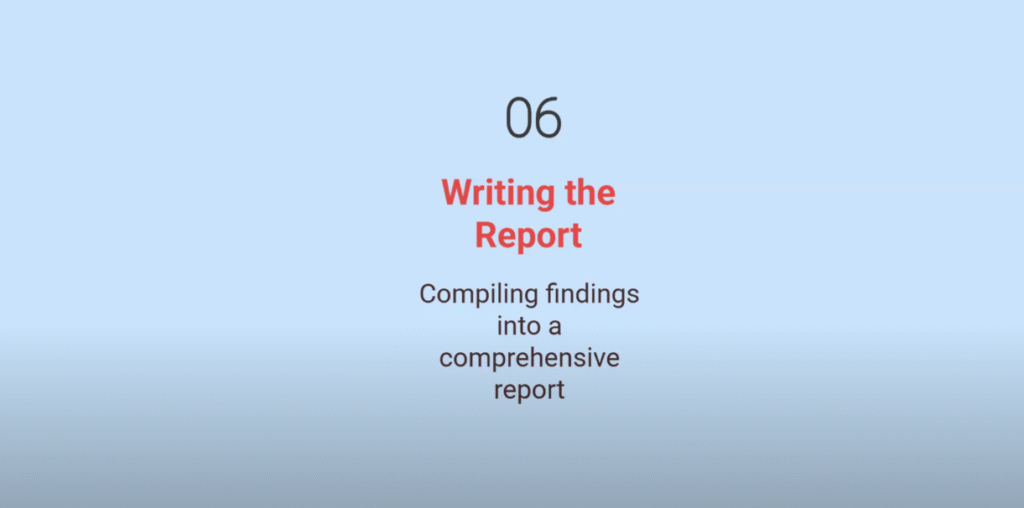
So that’s the inductive way of doing thematic analysis.
Now, let’s get back to N-Vivo and utilize or use the inductive way of doing thematic analysis that we’ve just highlighted.
So how do we code in N-Vivo?
Remember we imported these files.
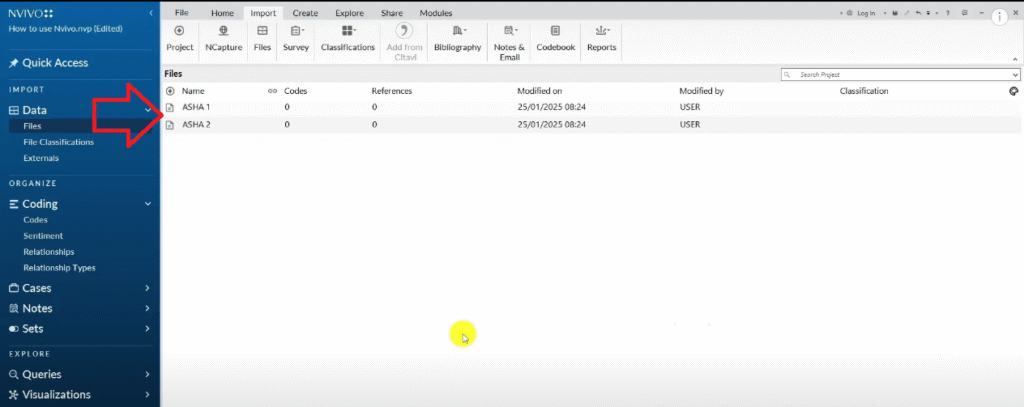
I’m going to double click one of these files.
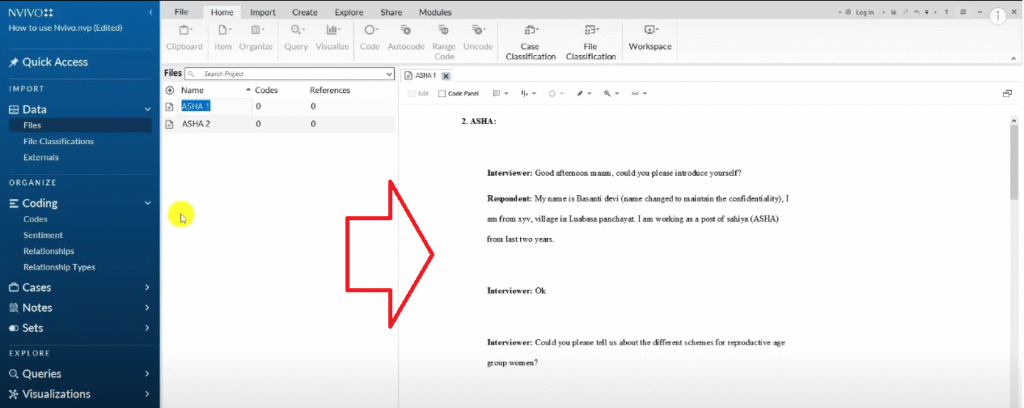
And now we follow the Braun and Clarke approach to generate codes.
Once we generate codes, we are going to put them in the codes section.
This is the codes section.
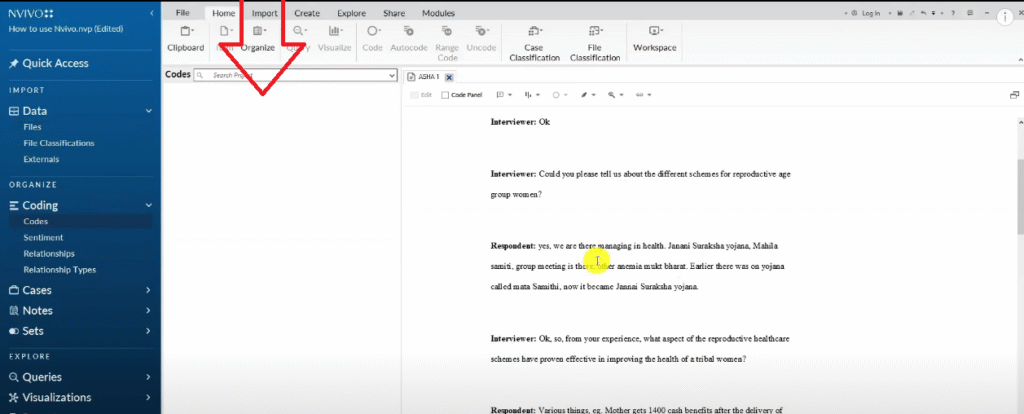
In the codes section, I want to right click and create a new folder call it initial codes.
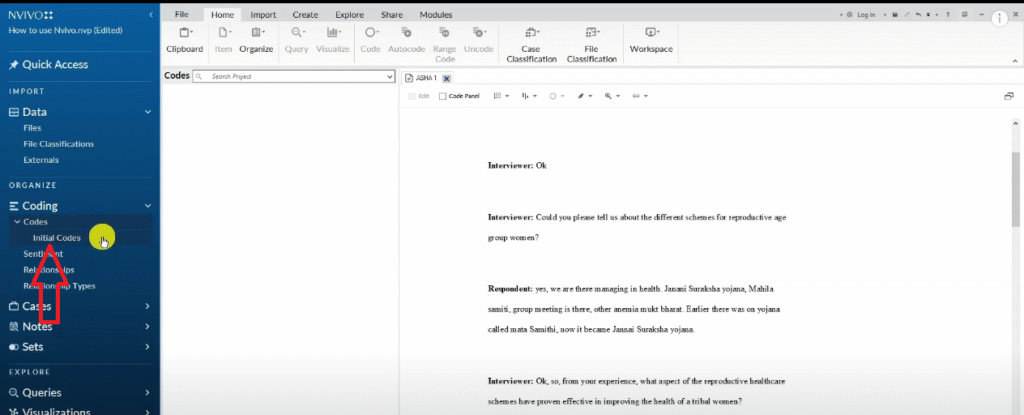
It’s important to always have this kind of arrangement where you have folders.
Because ideally when we move to the next step we want to revise the codes.
And we are going to copy this and create a new folder and call it maybe revised codes.
So we’ll be able to track our work across and we can show it to someone else.
Also we can be able to write about how we came from initial codes all the way to having final themes.
So I’ve just created an initial codes folder and I’m going to do codes there.
Now, before we begin coding and I define coding again.
I want you to understand that we need to manage the data when we are coding.
I’m going to use color codes.
For example, the codes I’ll do for question number one, I’ll use a color code like red.
To highlight all those codes.
Number two green and so on and so forth.
I’ll show you practically.
So this is the transcripts.
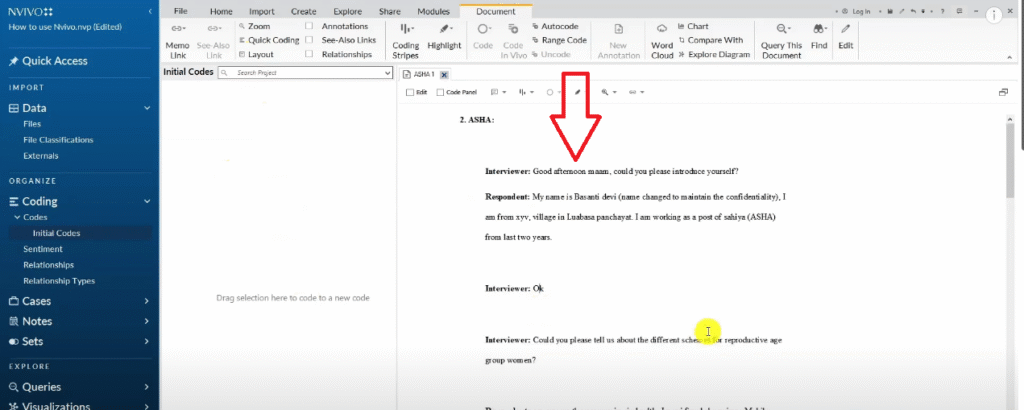
This is the area we are going to put our codes.
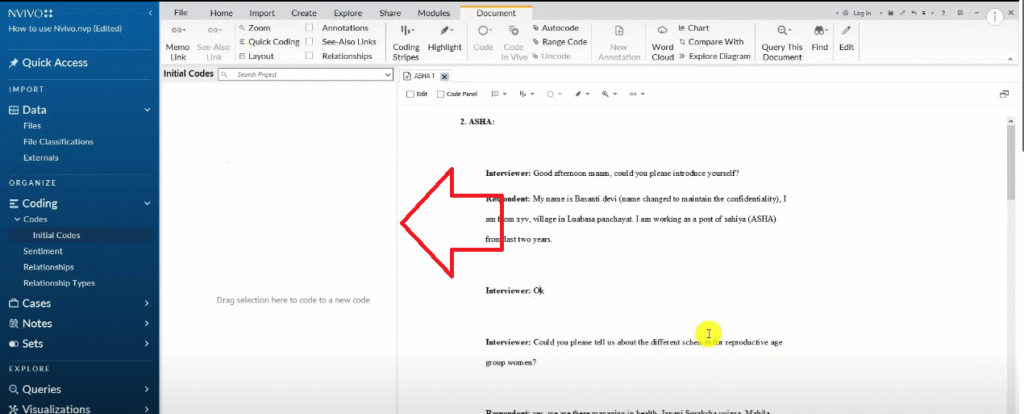
Now let’s proceed to coding.
Again, a code is a label or an interpretive statement to any information that’s important to our research questions or objectives.
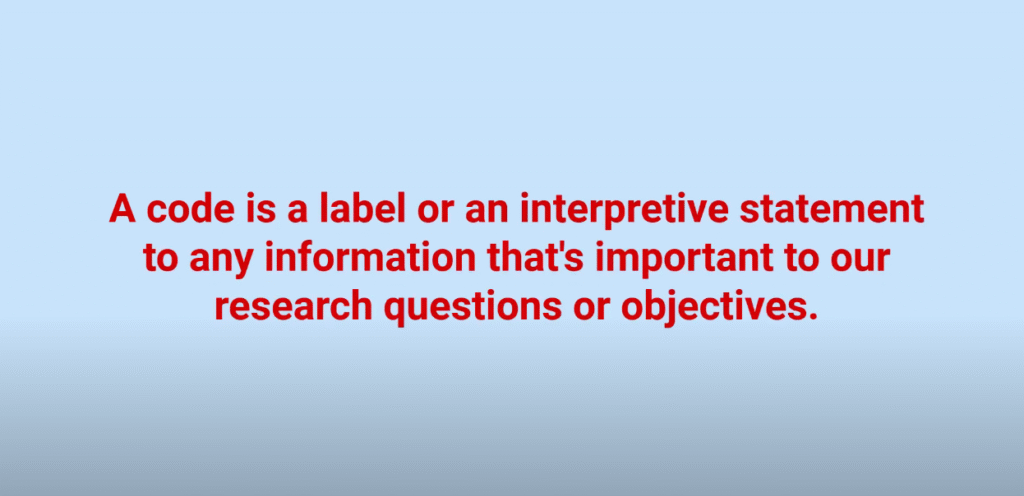
So, let’s read this together and do some coding in N-Vivo.
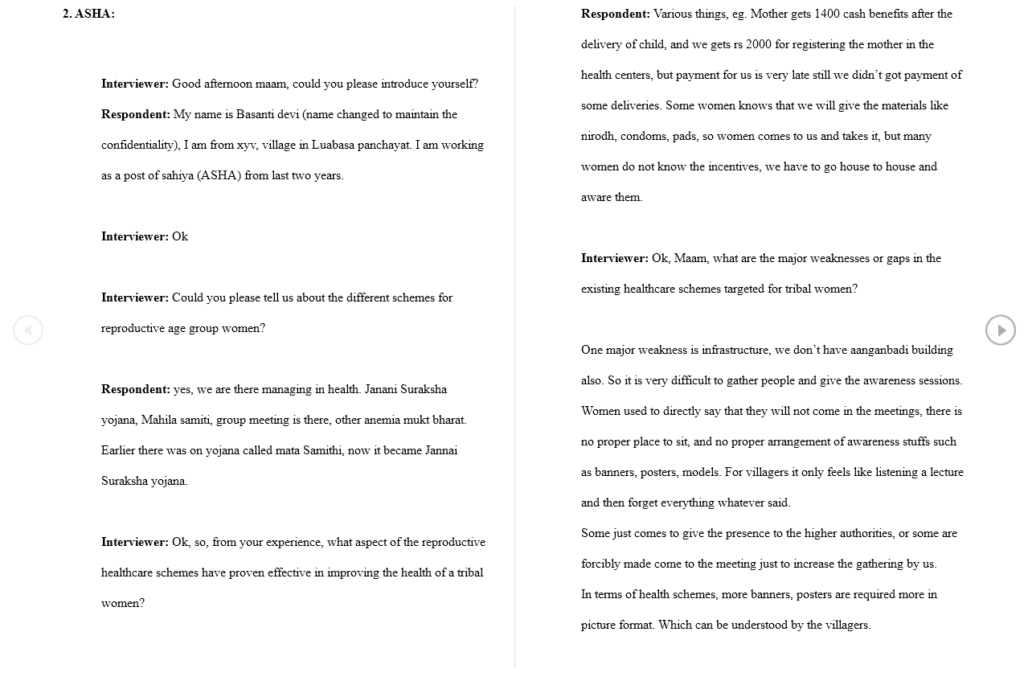
Now, these are some different schemes for reproductive health. Actually, I can code all those.
Even though I don’t understand Indian well I can code all those.
I want to highlight this because we can see this is one of the programs.
This is one of the schemes.
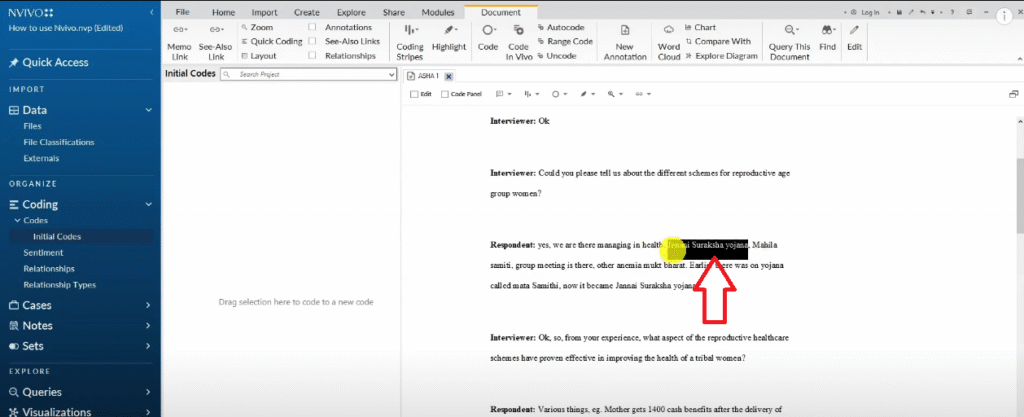
I can go to Code in Vivo.
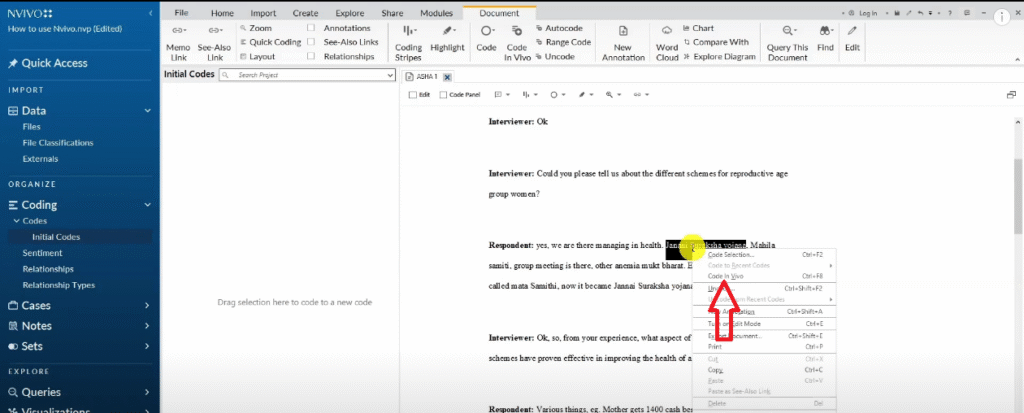
Code in Vivo means capturing this name as a code.
Let’s do that and see what happens.
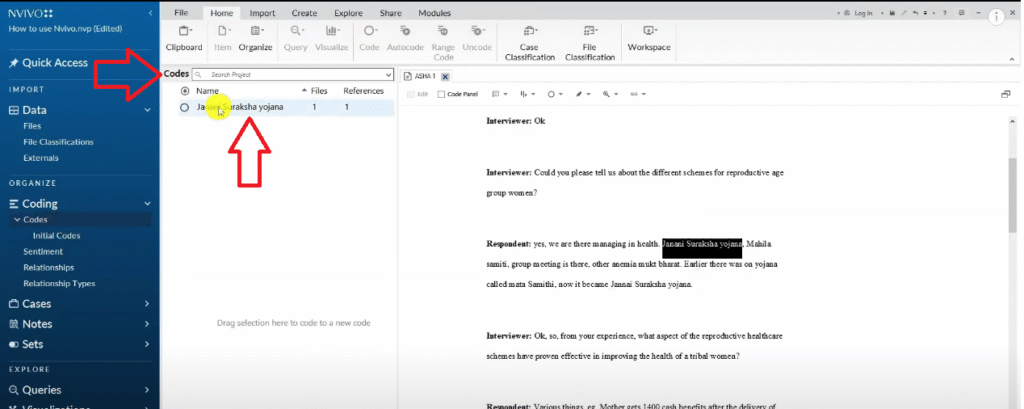
So that one will be sent directly to the codes area in the main folder.
Then I can drag this and drop it in the initial code.

Again there’s this other program called Mahila Samati. Don’t worry about this first section.
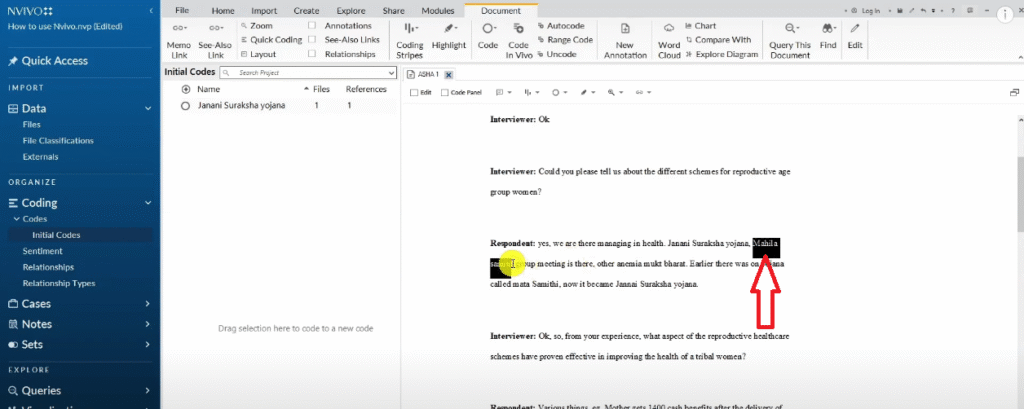
Again this one I want to code in vivo
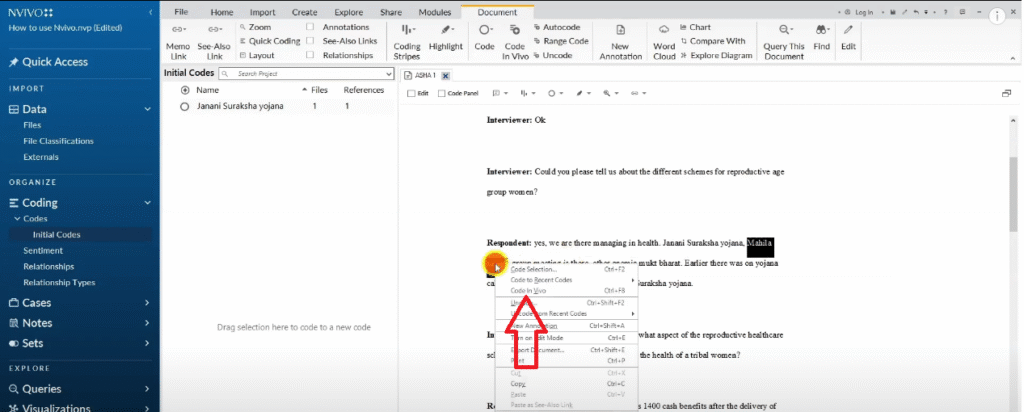
This is another scheme for reproductive health.
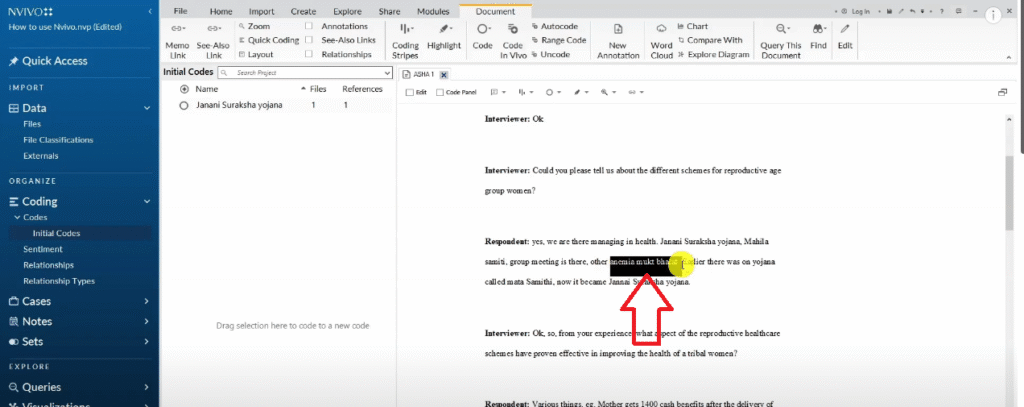
Scheme for women of reproductive age so again, code in vivo.
This is another scheme I code in vivo.
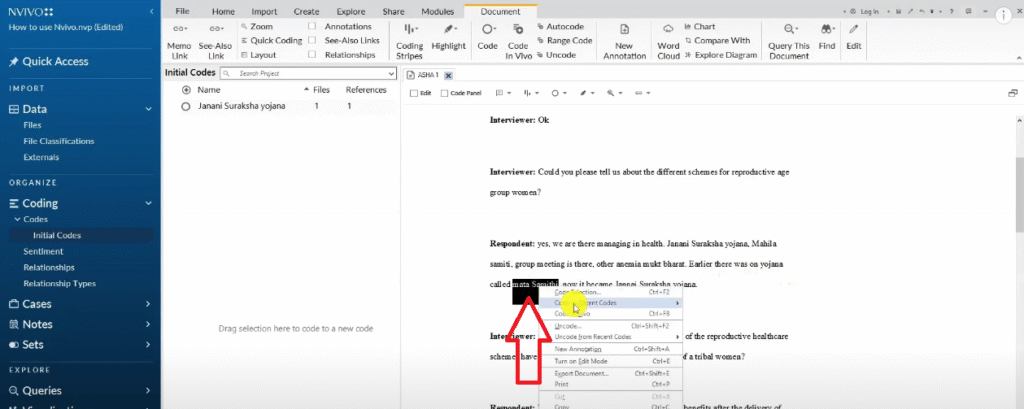
And this is another scheme code in vivo.
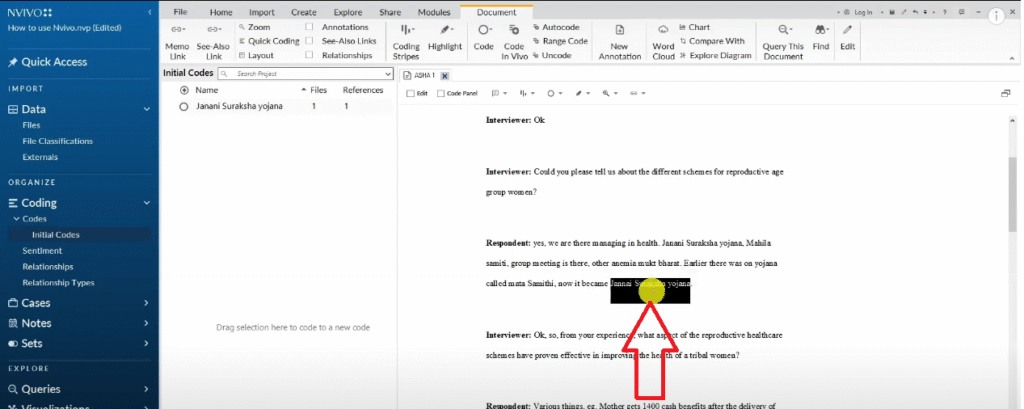
So all those in vivo codes I will select them.

I ctrl A.
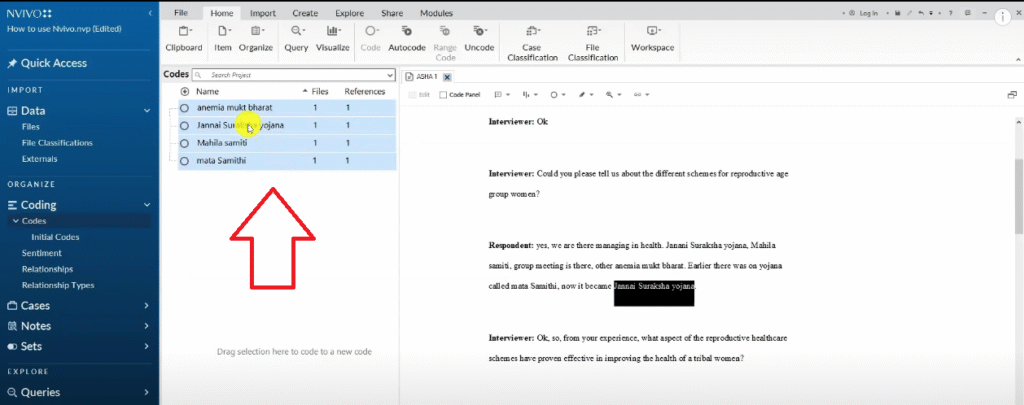
Then drag and drop them inside my initial codes.
You can see these are the different schemes for reproductive age group women that this person has highlighted.
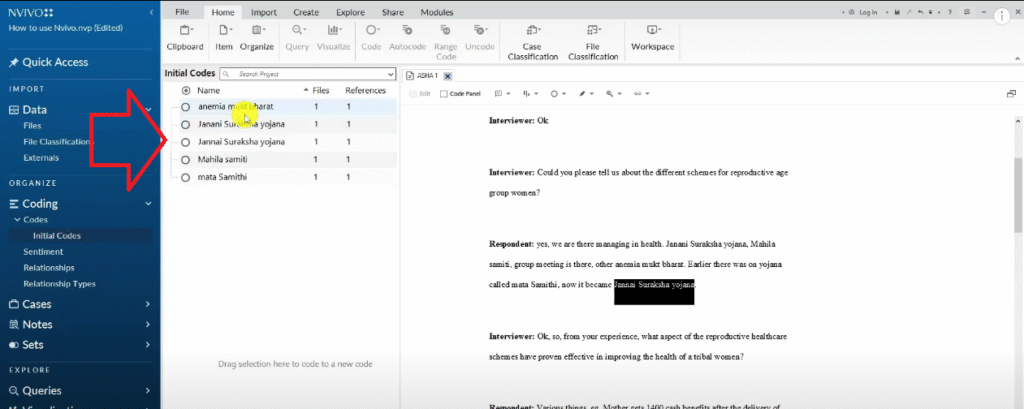
Having done that, you can see all this comes from the first question.
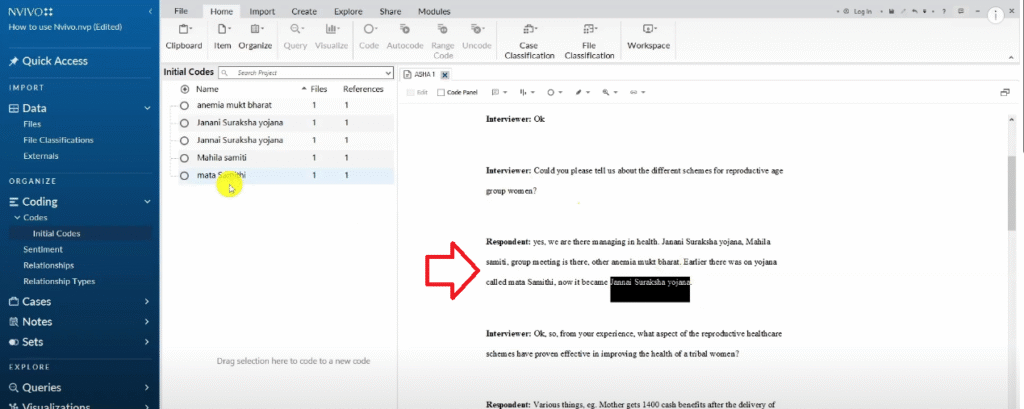
I want to mark all these codes with a certain color so that I’ll know where they came from.
If I go to control A
Right click.
Go to color.
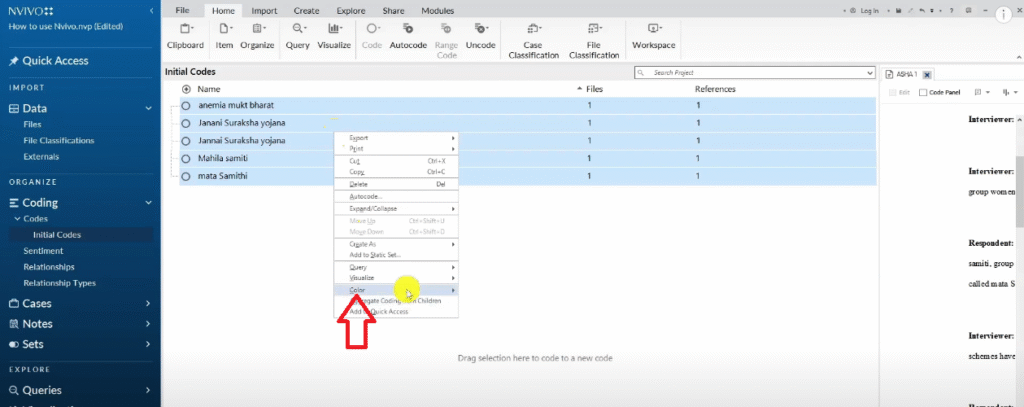
I can mark this as red.
I will say the first question, all the codes are color coded as red or I marked them in color red.
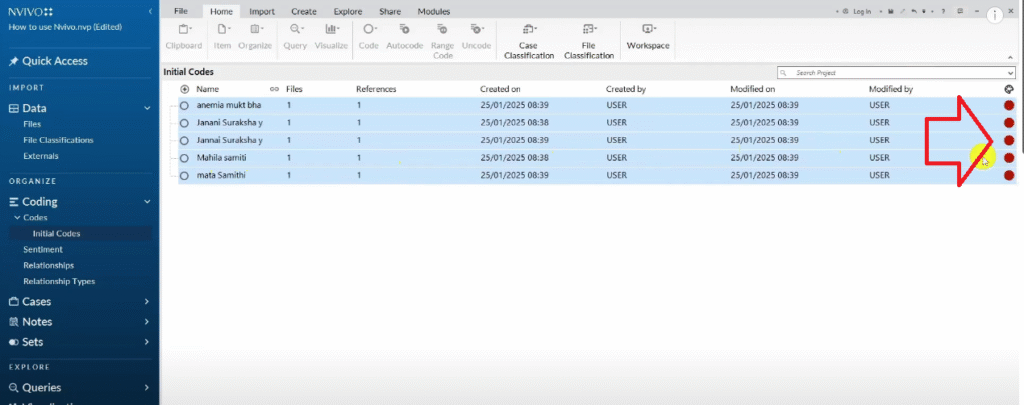
It’s important to mark your codes as you are starting to code because it’s a way that can help you easily look for a pattern of shared meaning,
Now let’s go back to our transcript.
And let me explain some few things that mean something to us.
You can see now in our transcript you start seeing like codes 5 and reference 5.
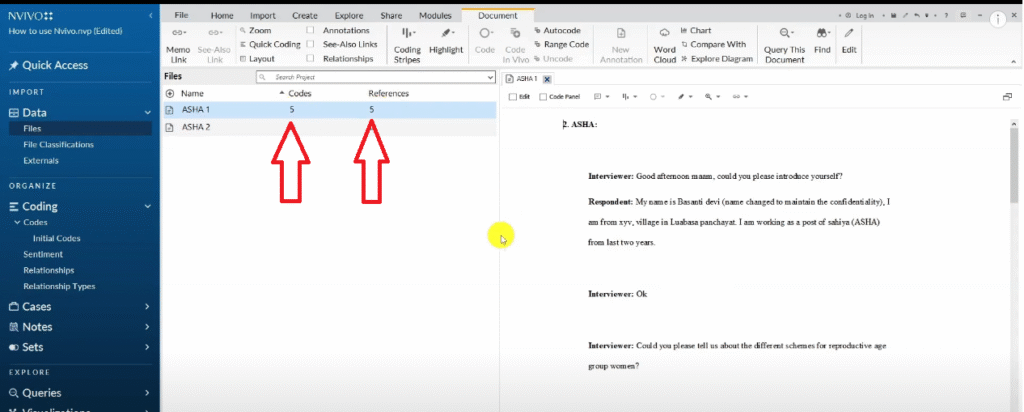
So N-Vivo counts every code that you develop or it tracks every code.
And files you can see files 1.
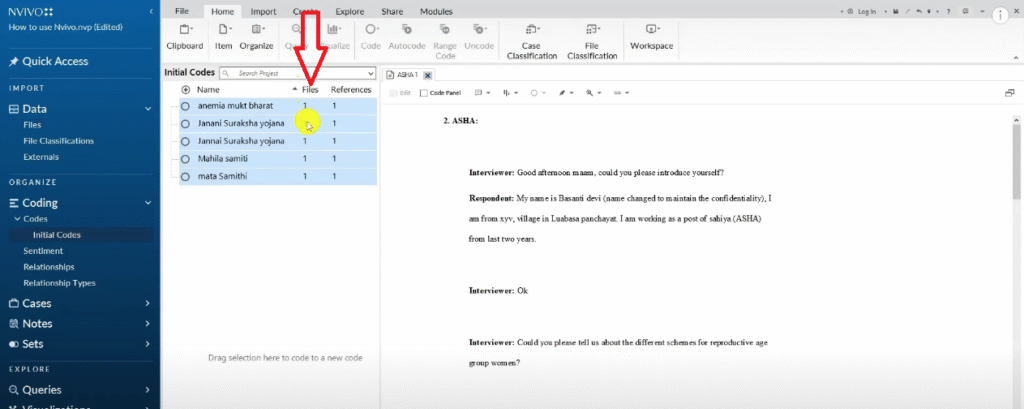
Because we are getting this data from 1 transcript references too.
If we get data from 2 transcripts, files will be 2.
So that’s the first question.
Now let’s go to a question that is in English so that you can understand coding and how we develop meaning generally how we tag.
What aspect of reproductive health schemes have proven effective in improving health of tribal women?
So, what aspects? Let’s see.
Various things. Mothers get 1400 cash benefits after the delivery of a child. We get 2,000 for registering mother in health centers, But payment for us is very late, still we didn’t got payment for some deliveries, some women knows that we will give them materials like nerodh, condoms and pads.
So you can come to us and takes it. But many women do not know the incentives. You have to go house to house and make them aware. Let’s read the question again.
What aspect of reproductive health schemes have proven effective in improving the health of tribal women?
We can see mother gets 14, 000 cash benefits after delivery of a child incentives.
So, one that has been effective in improving the reproductive health of tribal women is,
So I highlight that section.
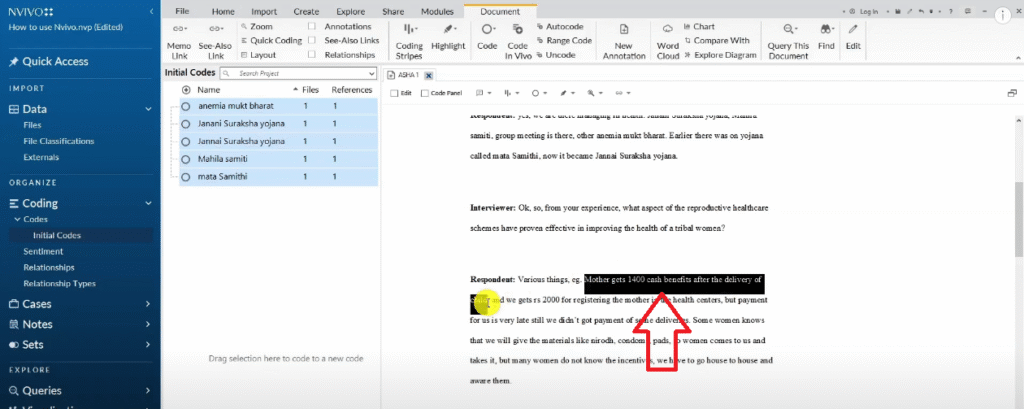
I go to code selection, again I want to code this inside the initial codes folder
I click on top level code.
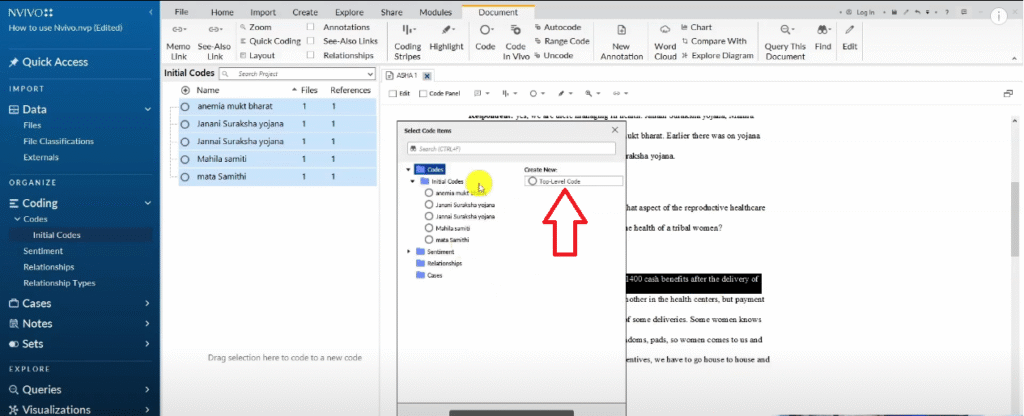
And I say:
Providing financial Incentives for women who seek reproductive health services.
You can see this is the code.
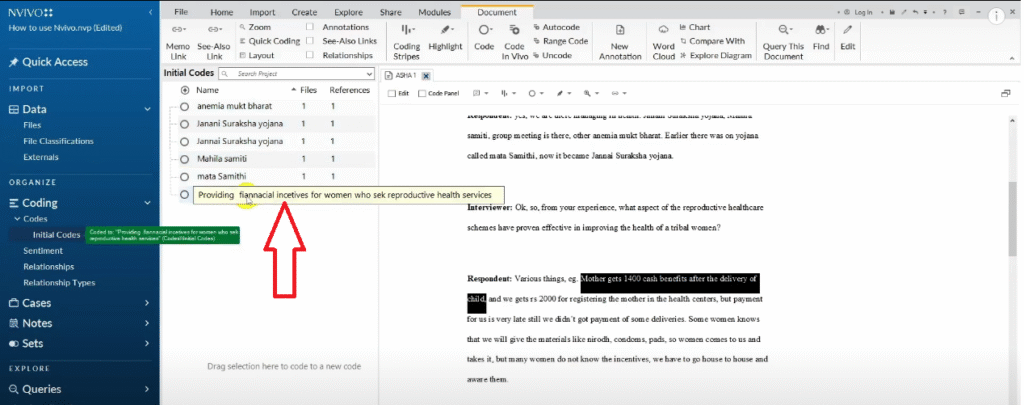
So again, if I make spelling mistakes I can always come and edit this.
So you can always edit your code by right clicking and going to code properties.
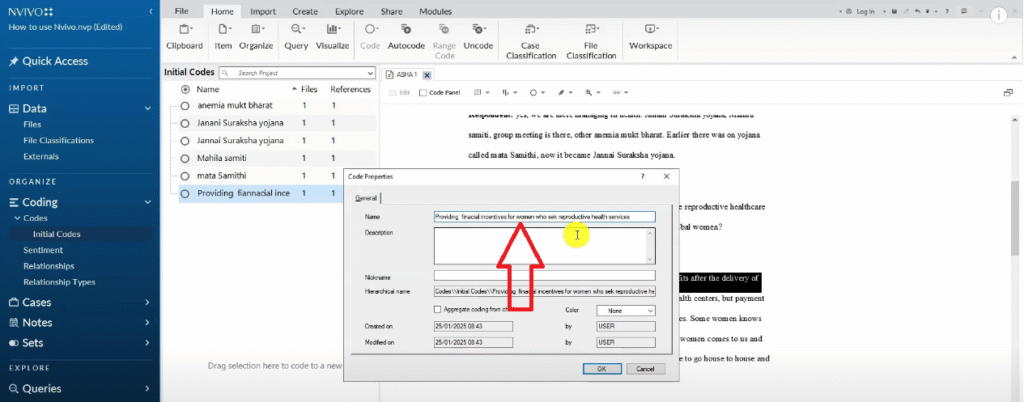
Now this code came from the second question.
You can see I labeled all the codes from the first question in red.
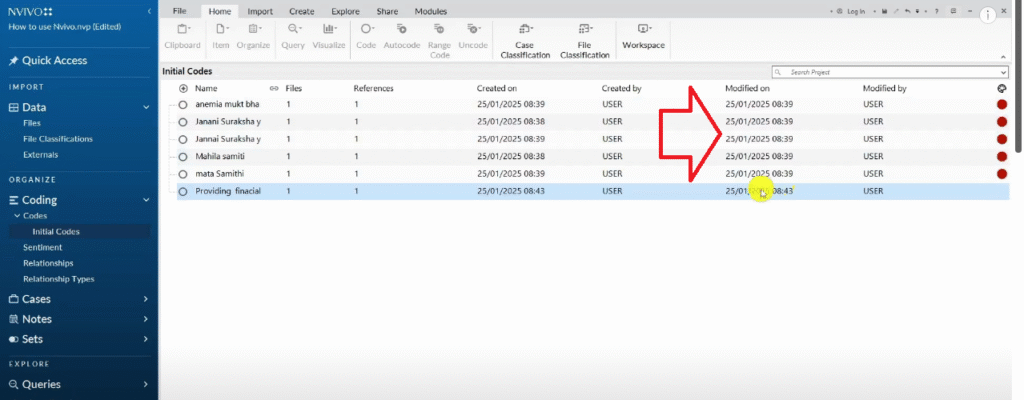
For the second question, I right click.
I go to color code and use the second color which is dark blue.
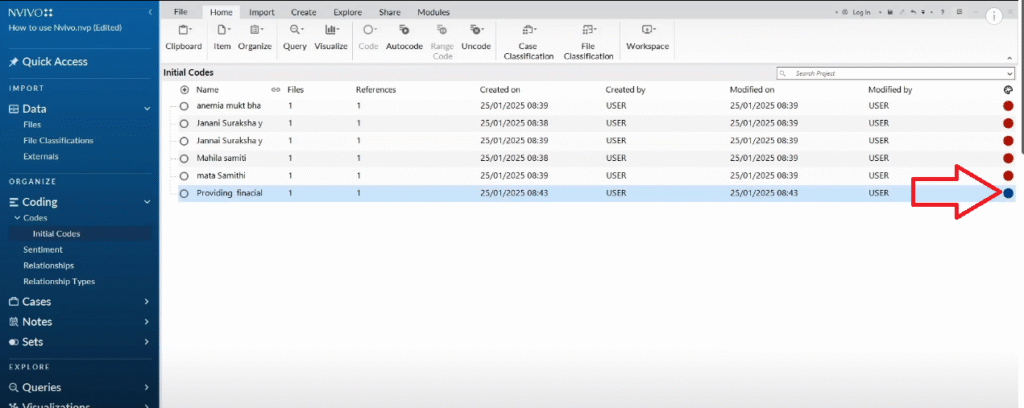
Let’s keep coding.
And we get 2,000 registering mothers in healthcare centers.
Let’s highlight this statement and say
Select code selection, go to initial codes.
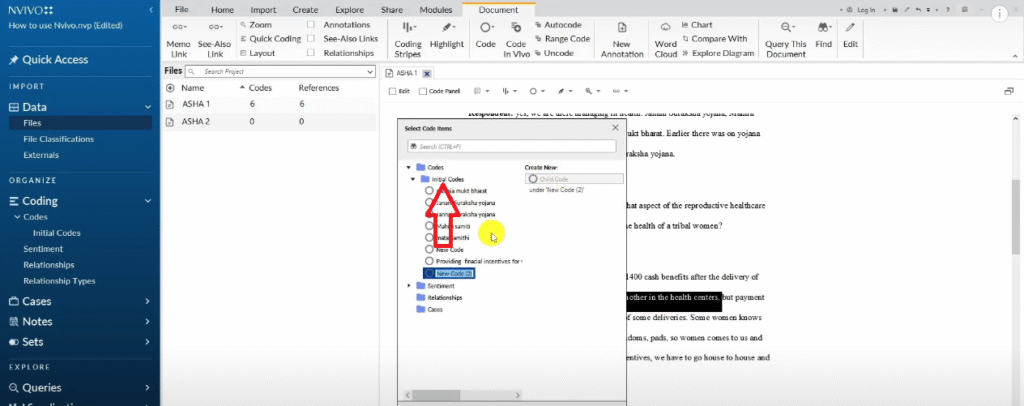
Click on top level code.
We say to provide financial incentives to health services to tribal women.
Then let’s go to code selection.
Let’s click on our code.
This is the code we have.
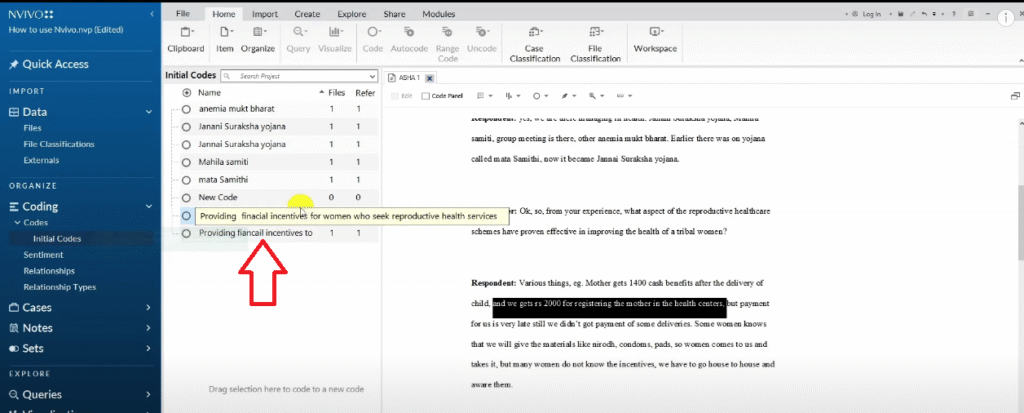
Again for this code I want to right click and go to color and label it as dark blue.
So I have two codes from the second question.
That’s why I label them as dark blue.
And I have four codes from the first question.
And another thing you can see about my code some of them are long and some are short.
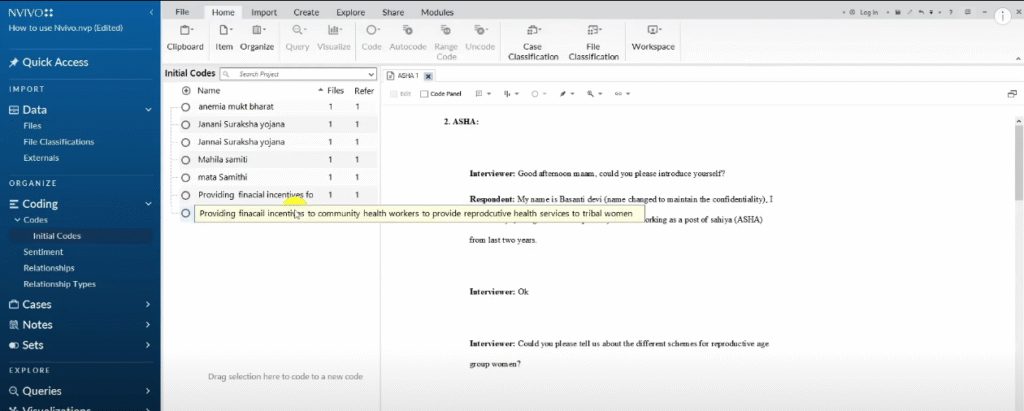
It depends with the meaning.
The code has to represent the meaning or we are trying to interpret the meaning of a certain quote.
If we double click on this code.
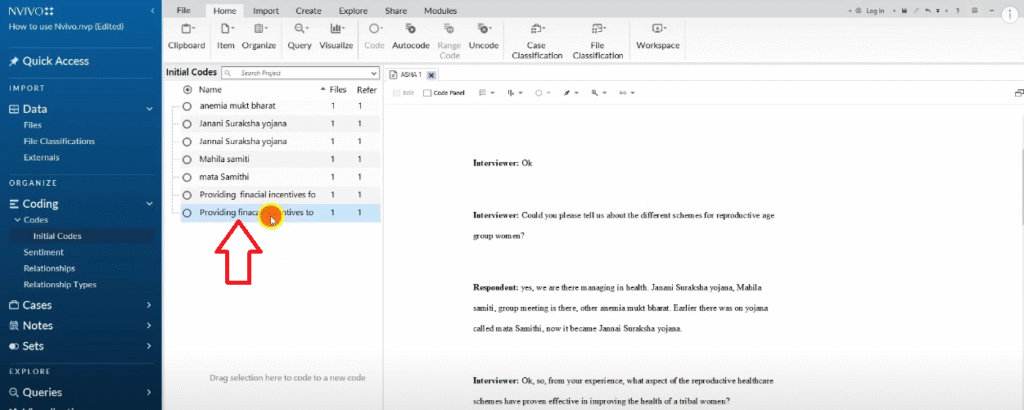
You can see, this is the quote.
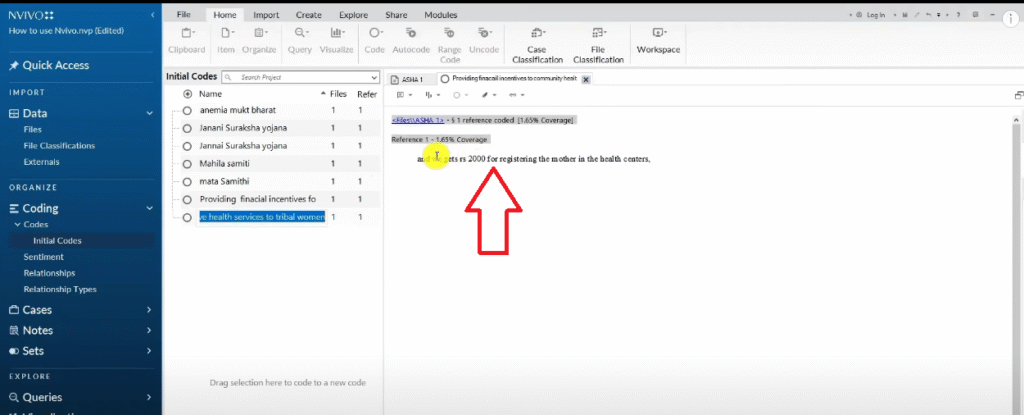
If I click here
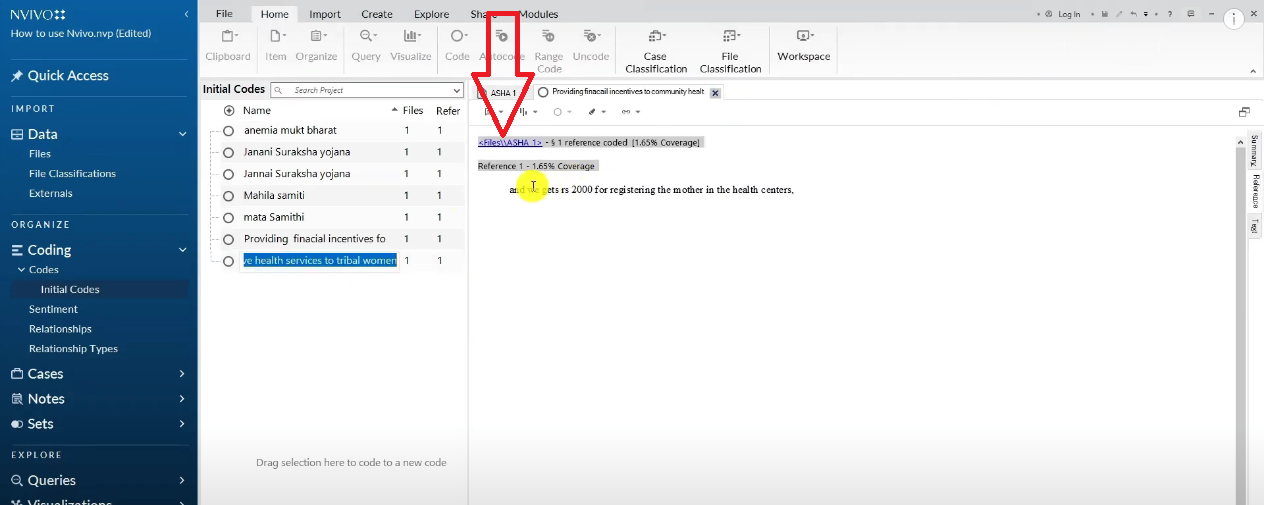
You can see the area I just coded.
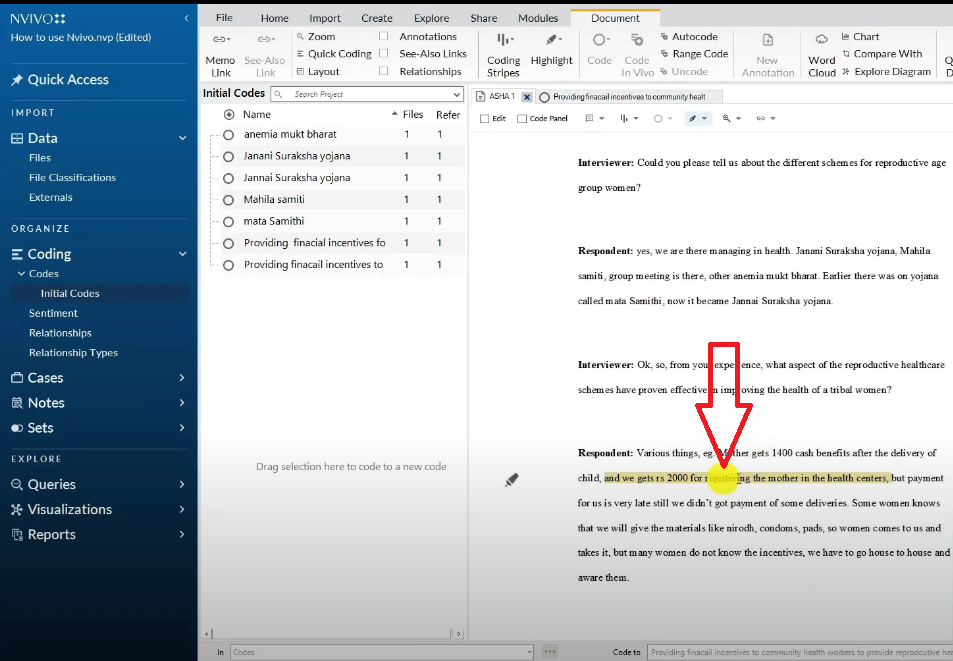
So the code came from the transcript.
And through N-Vivo you are able to track all this.
Let’s look at another question.
Okay, ma’am what are the major weaknesses or gaps in the existing healthcare schemes targeted for tribal women?
One major weakness is infrastructure. We don’t have a building also so it’s very difficult to gather people to give awareness sessions.
Let me quote this whole section as:
Inadequate infrastructure to convene reproductive Health sessions in target communities.
This is what this person is trying to say.
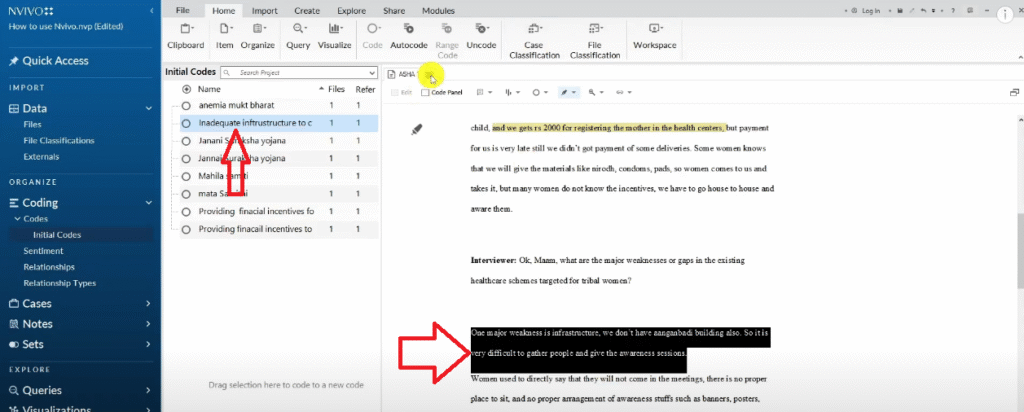
That code came from the third question.
If it came from the third question, we have to go to color and use another color.
That’s dark green.

It’s very important to tag codes based on the questions they come from.
Because we are going to look at the codes that have shared meaning and combine them into newer categories.
Let’s get another code there.
Women used to directly say that they will not come in a meeting, there is no proper place to sit, and no proper arrangement of awareness staff, such as banners, posters, and models. For villagers, it only feels like listening to a lecture, and then they forget everything.
So just comes to give presence to higher authorities, some forcibly made to come to meeting.
In terms of health schemes, more banners, posters are required, more in picture format, which can be understood by villagers.
So this person is saying another weakness is lack of sufficient teaching aids.
Let’s go to top level codes and code lack of sufficient teaching aids.
So teaching aids for the community members.
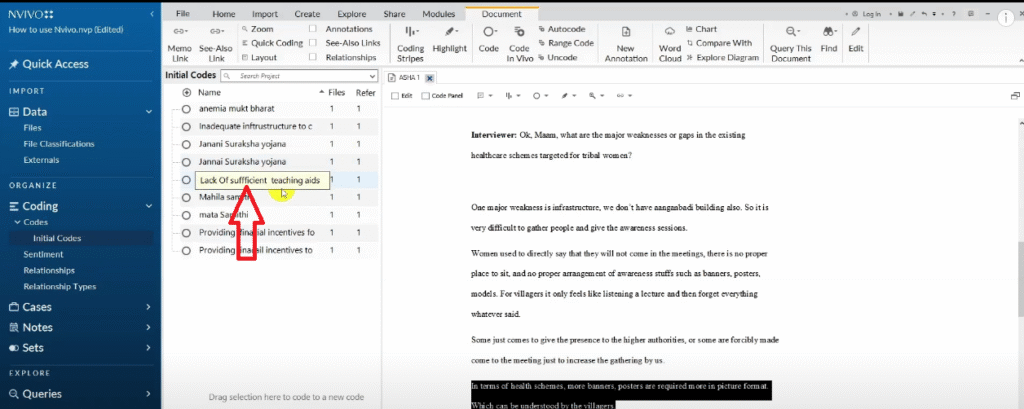
Again that came from the second question.
So I have to make sure I right click and go to color and label that as dark green.
You can see again these two color codes are related.
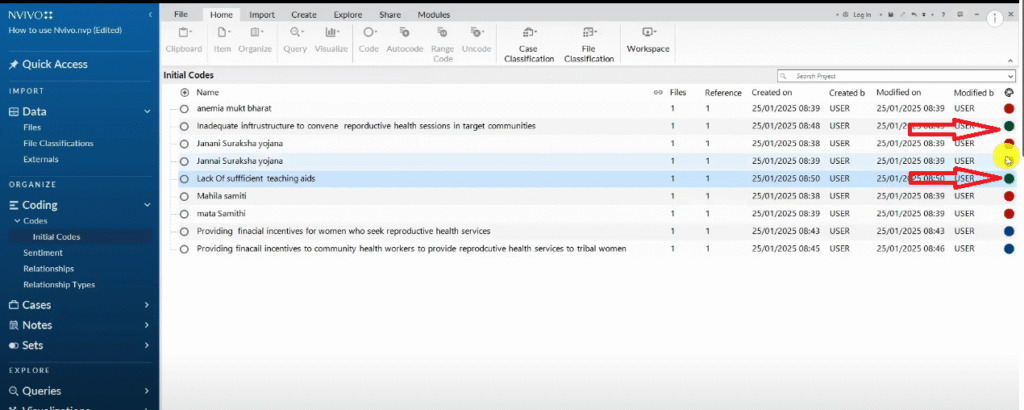
That’s why I put that as dark green or color coded that as dark green.
Now, I want to move to the second transcript and do the same form of coding.
Let’s go to initial codes.
Could you please tell us about different schemes for reproductive group?
Yes, they are managing, there is this Janami Shuraksha.
You can see we had this same scheme or we found this Scheme that was mentioned by another participant.
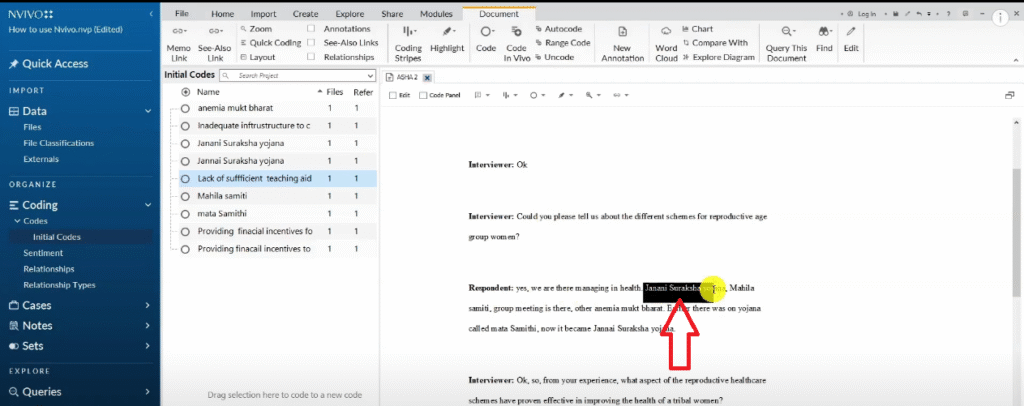
So how do we code that?
We can go to a right click.
Go to code selection.
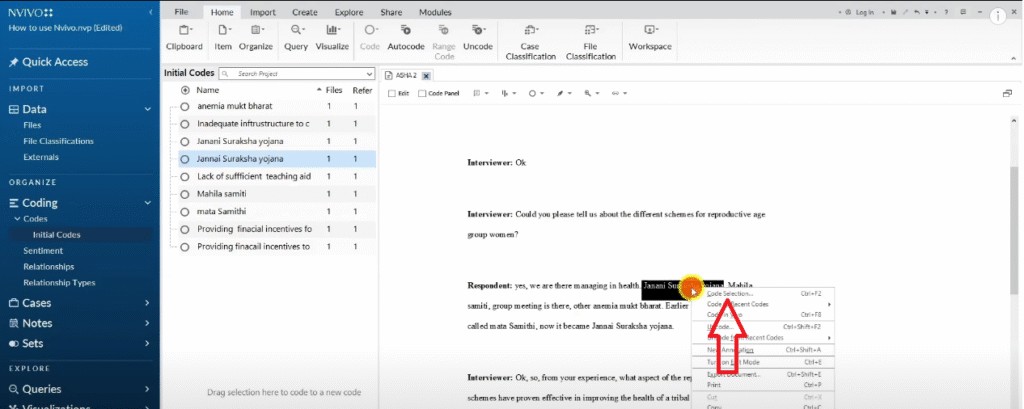
And now click on that same code.

Look carefully what happens here.
Files become 2.
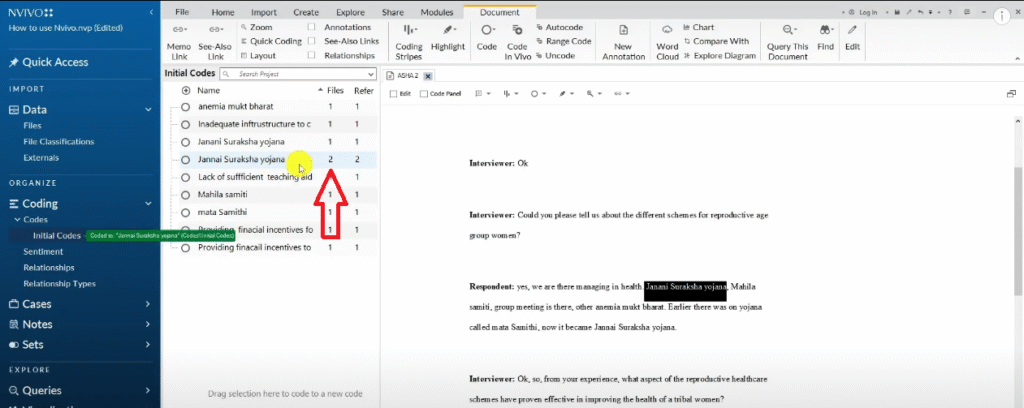
And references become 2.
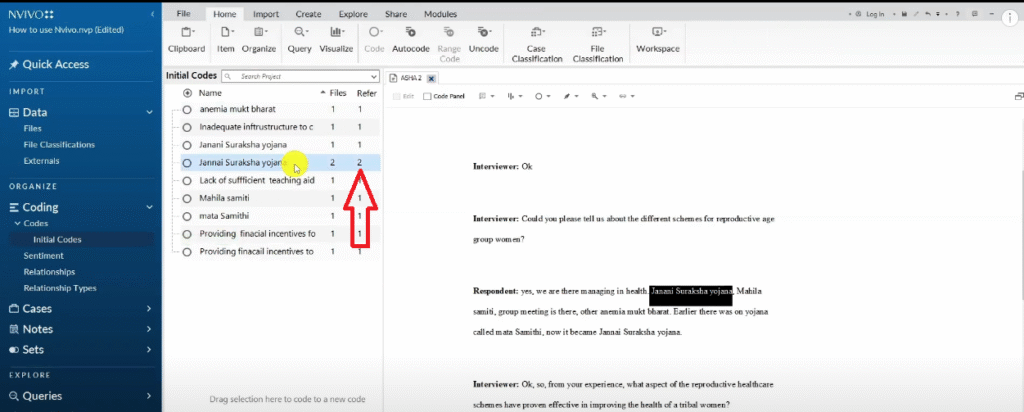
What does that tell you?
That two people said the same thing.
So one code can be highlighted by more than one person by 5 people or 10 people.
So basically that’s the same thing.
Now this is the second code.
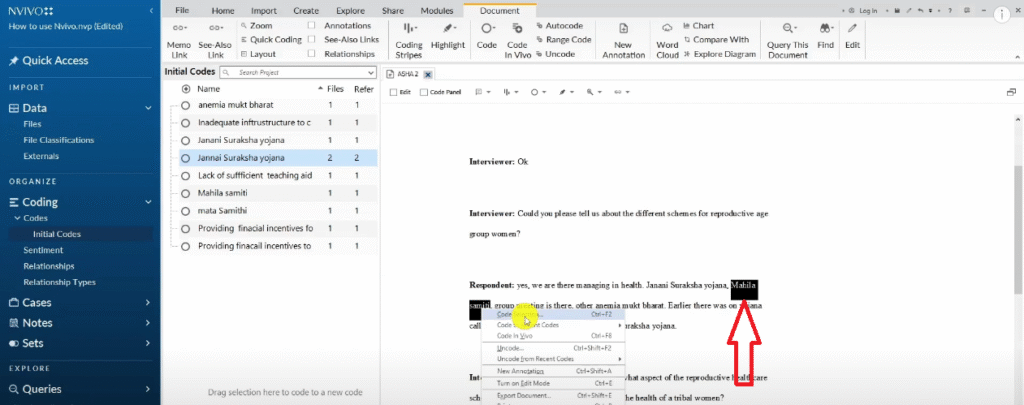
Click on code selection and now go to this code.
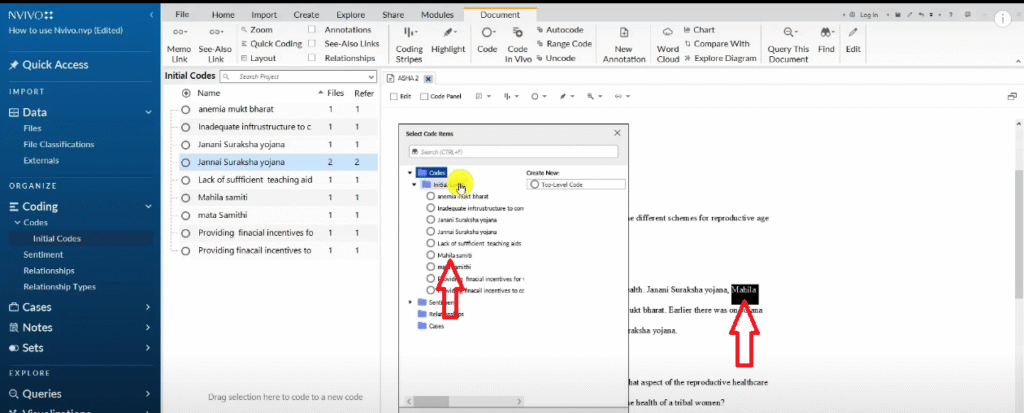
You can see again that code will have 2 files and two references.
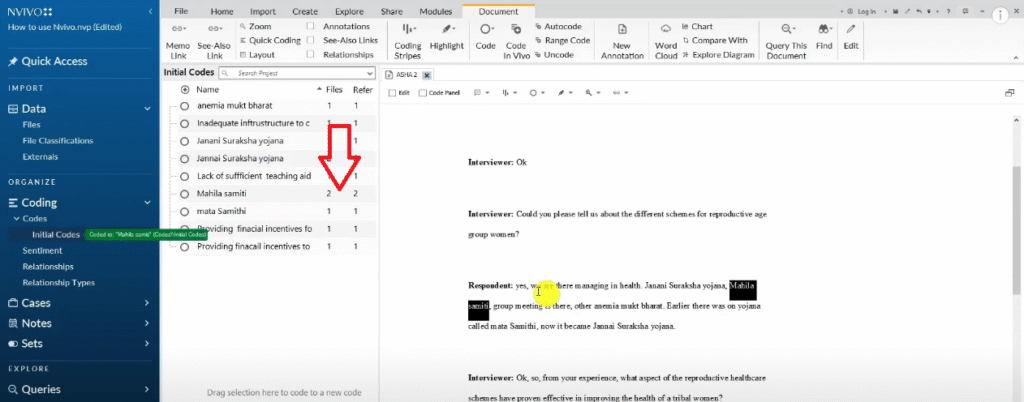
Two files means this code was provided by two participants and two references are the sections.
So, if you have more than one file which is the case.
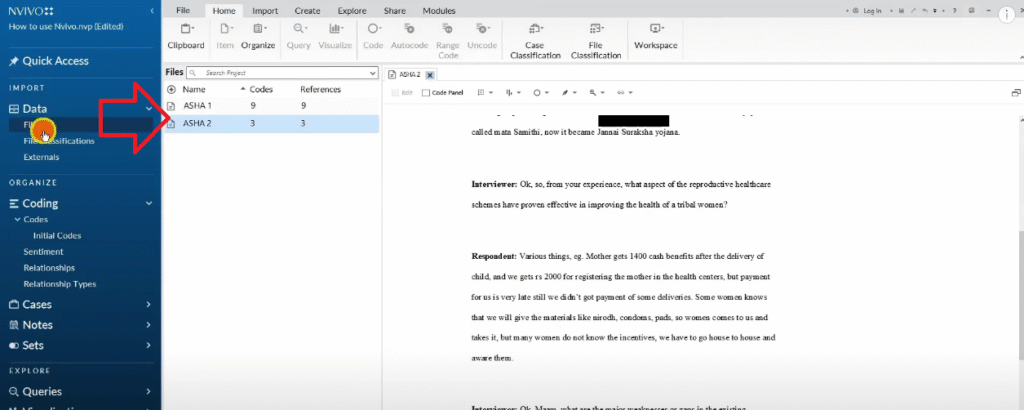
We normally have 5, 10, 15, 20 participants in qualitative analysis
That is how you handle such information and you combine.
Now, for this article because it’s just an introduction of how to use N-Vivo, to do coding and thematic analysis.
We’re going to leave it at that.
